- Destinations
- Travel Tips
- Travel With Us
- Paid Travel Internship
- TTIFridays (Community Events)
- SG Travel Insider (Telegram Grp)

The Travel Intern

An ever-popular destination no matter the season, the Land of the Rising Sun is nothing short of good food, amazing cleanliness, and a myriad of distinctive sub-cultures. A multi-faceted country once you start exploring deeper, there’s always something new to discover in Japan, where traditional and modern elements combine to form something special.
JAPAN VIDEOS

TRAVEL INFORMATION
Country Code : +81 Time Zone : GMT +9 hours (1 hour ahead of Singapore) Peak Travel Period : April to May, August Four Seasons : Yes Currency : Japanese Yen, JPY (¥)
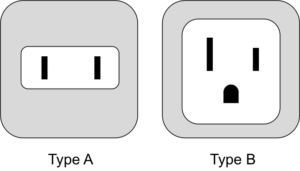
USEFUL WORDS
- Hello – Konnichiwa (こんにちは)
- Excuse me – Sumimasen (すみません)
- Thank you – Arigato gozaimasu (ありがとうございます)
- I don’t understand Japanese – Nihongo ga wakarimasen (にほんごがわかりません)
- Cheers – Kanpai (かんぱい)
- Delicious – Oishi (おいしい)
- To show appreciation before eating – Itadakimasu (いただきます)
- Thank you for the delicious meal – Gochisou sama deshita (御馳走様 でした)
TOP 3 THINGS TO DO IN JAPAN
Enter promo code <THETRAVELINTERN> on Klook for a 5% discount! T&Cs apply.
JAPAN ITINERARIES
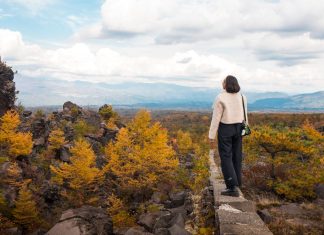
5D4N Solo Tokyo Itinerary — Ghibli-esque Attractions and an Escape to...
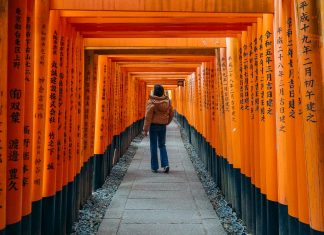
6D5N Kyoto-Based Japan Itinerary — Things to do Beyond Fushimi Inari...
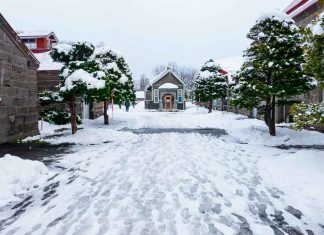
6D5N First Timer’s Hokkaido Itinerary — A Relaxing Getaway for S$1.2k
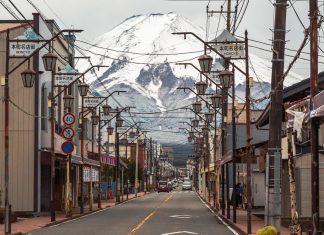
3D2N Mt Fuji Itinerary Under S$570 — Road Trip From Tokyo

7D6N Japan Itinerary Under S$1.5k — Road Trip from Tokyo to...
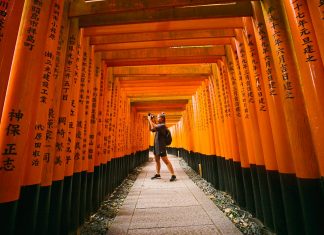
8-Day Tokyo to Osaka Japan Itinerary For First Timers Under S$690
Japan food guides.
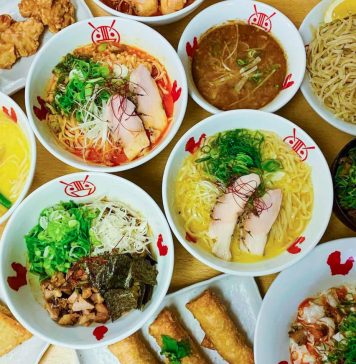
Tokyo Halal Food Guide — Muslim-friendly Kobe Beef, Snow Crab Tempura and Udon
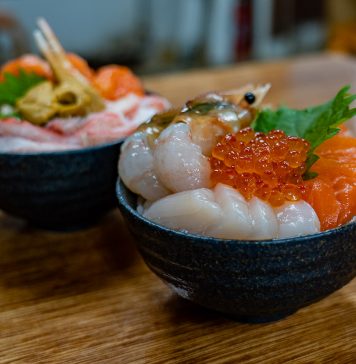
Hokkaido Food Guide — 9 Must-Eats on Your Next Japan Itinerary
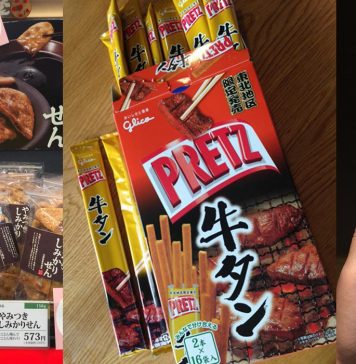
11 Japanese Snacks to Bring Home from Tohoku
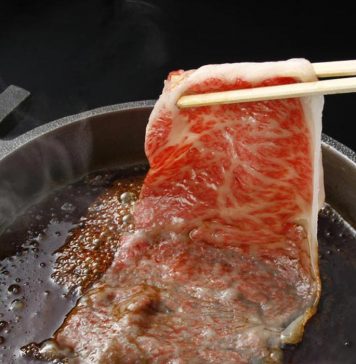
8 Japanese dishes you must try outside Tokyo: Yamagata Edition
Discover japan.

16 Must-Eat Food in Osaka and Kyoto

The Ultimate USJ Guide and Tips (2024) — Universal Studios Japan

Tokyo Disneyland and DisneySea Guide (2024) — Maximise your Tokyo Disney...
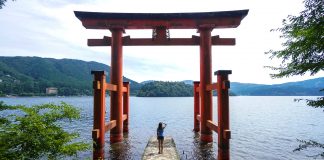
Hakone Guide — The Day Trip You Need in Your Tokyo...
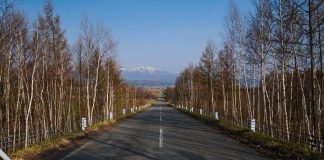
8-Day Hokkaido Itinerary — Spring Road Trip Under S$1k
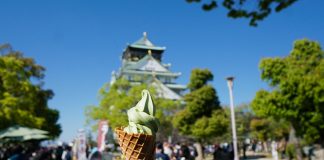
8-Day Japan Itinerary: 9 Cities in Kansai for Under S$900

- Terms Of Use
- Privacy Policy

- PLAN MY TRIP
- All Destinations
- NEW! Discover Okinawa
- Discover Hokkaido
- Discover Honshu
- Discover Kyushu
- Discover Shikoku
- THINGS TO DO
- Japan Travel Deals
UPDATED! Japan Rail Pass: The Ultimate Guide (2024 Edition)
61 comments

Download my "Essential Japan Rail Pass" checklist:
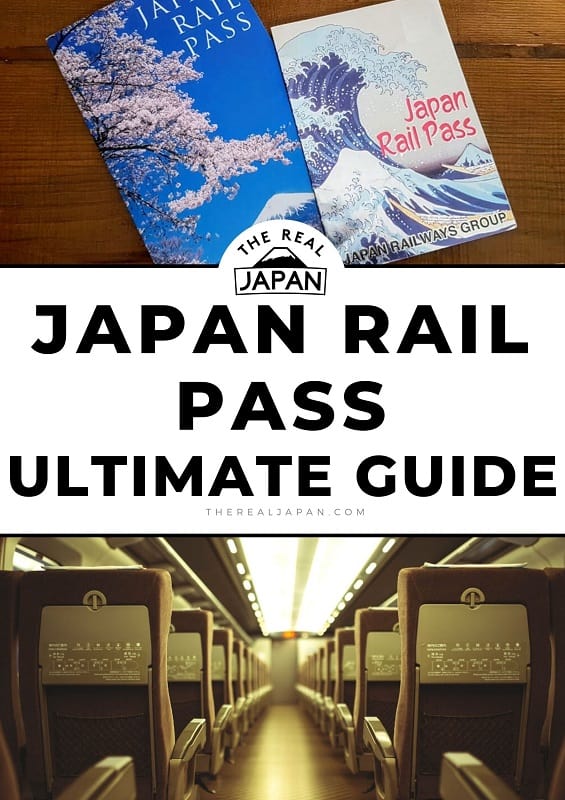
Selecting a start date for the Pass
When you exchange your voucher for the actual pass, you can select any start date provided it is within one month from the day you exchange . Note: once the actual pass is issued, the start date cannot be changed.
If you purchase passes through the official JR website you will need to select the start date of the passes at the time of purchase, and again, the start date cannot be changed later.
Where can I activate my Japan Rail Pass?
For Japan Rail Passes purchased in advance outside of Japan, you need to activate them at an exchange office after arriving in Japan . Exchange offices can be found in several major train stations and airports.
The official JR Pass website has a complete list of exchange offices here: https://japanrailpass.net/en/exchange.html .
How to make seat reservations
Seat reservations are free with the Japan Rail Pass . After exchanging your voucher for the actual pass, you can make seat reservations for JR trains for free at ticket machines or ticket offices across Japan. Note: reservations cannot be made on board trains.
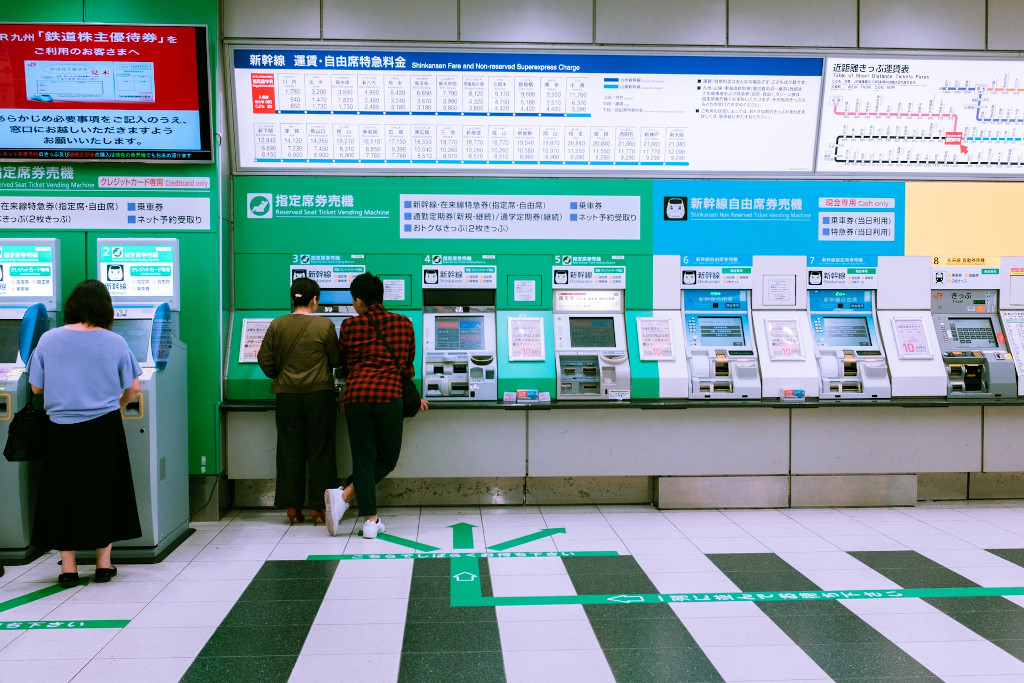
The official Japan Rail Pass website includes a list of all of the exchange offices: https://japanrailpass.net/en/exchange.html .
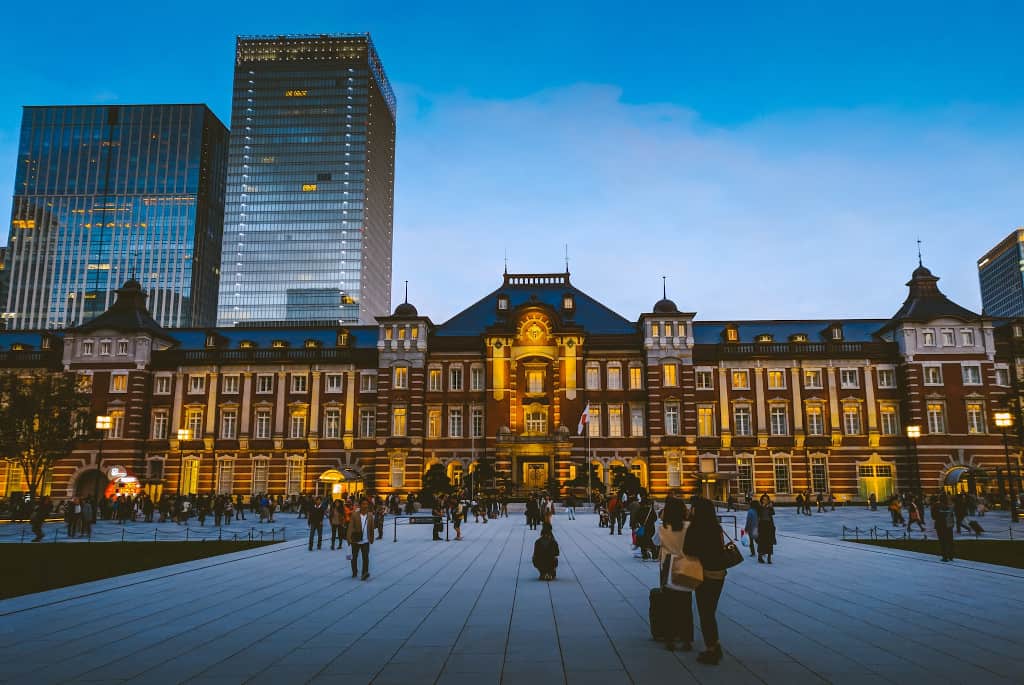

The Japan Rail Pass is not valid or requires a supplement fee in the following cases:
- Non-JR trains JR operates the large majority of train lines in Japan, including all shinkansen lines; however, there are also numerous other railway operators. Most of them serve relatively small regional networks or even just single lines, and they are most prominent in the suburbs of Japan's largest cities. Furthermore, most subway lines in Japan are not operated by JR. The Japan Rail Pass is generally not valid on non-JR trains.
- Tokyo - Nagoya: 4,180 yen
- Tokyo - Kyoto: 4,960 yen
- Tokyo - Shin-Osaka: 4,960 yen
- Tokyo - Hiroshima: 6,500 yen
- Tokyo - Hakata: 8,140 yen
- Shin-Osaka - Hiroshima: 4,170 yen
- Shin-Osaka - Hakata: 4,960 yen
- Shin-Osaka - Kagoshima-Chuo: 9,460 yen
- Hakata - Kagoshima-Chuo: 4,500 yen
In order to ride Nozomi and Mizuho trains, pass holders will have to pay the supplement fee in the form of a "Nozomi Mizuho Ticket", which can be purchased at ticket offices at major JR stations across Japan.
- JR trains using non-JR tracks There are about a dozen JR trains that partially run on tracks owned by different railway companies. Japan Rail Pass holders will have to pay the fare for these non-JR sections. Please see our special page on JR trains using non-JR tracks for a list of these trains.
- Special compartments and berths Special compartments, such as berths on night trains, are not fully covered by the Japan Rail Pass. A supplement fee has to be paid. See our night train page for more details.
- Trains requiring liner tickets There exist a few suburban "home liner" trains, which require a special "liner ticket" and are not covered by the Japan Rail Pass. However, since these trains are targeted at suburban commuters, foreign tourists are unlikely to use them. Confusingly, there are also a few trains that contain "Liner" in their names, but do not require a liner ticket, such as the Marine Liner and Seaside Liner. These trains are fully covered by the Japan Rail Pass.
- Highway buses The pass is not valid on any highway buses . It used to be valid on a small number of JR highway buses before spring 2013.
The Japan Rail Pass includes the following additional features:
- Free seat reservations Pass holders can make seat reservations for JR trains for free.
- Discounts for selected tourist sites and services Pass holders are able to profit from discounts or gifts at selected sightseeing spots and shops. The discounts are typically 10% or 100 yen and gifts are typically a free postcard. See a list of discounts at the official website .
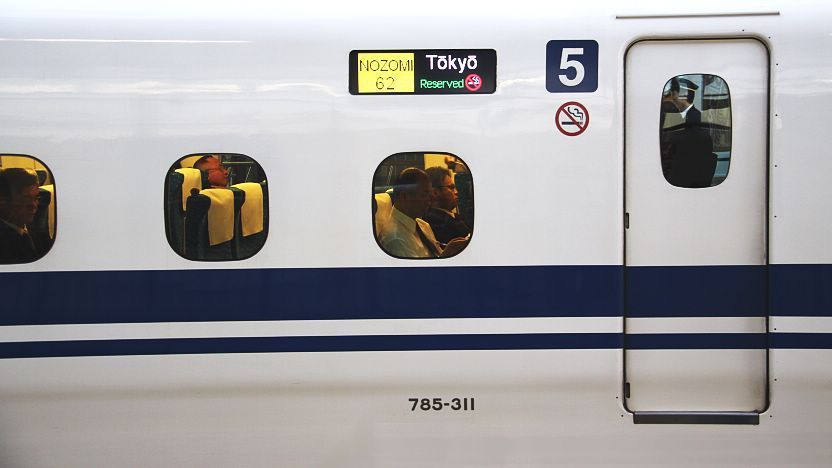
Green vs. ordinary
Green cars offer larger seats, more foot space and enhanced board service, and they tend to be less crowded than ordinary cars. They are available on most shinkansen and limited express trains and on a small number of local trains. Many travelers find the size and foot room of ordinary seats sufficient, but those looking for additional luxury, should go for the green car.

Upgrading to Green Car possible?
It is possible, but the ordinary rail pass will cover only the base fare . The green car fee and possible shinkansen or limited express supplement fees will have to be paid separately, which usually adds up to a rather large amount.
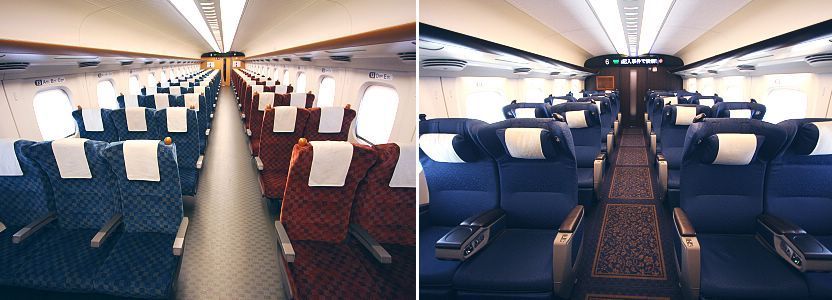
Can the pass be shared or transferred?
No, the Japan Rail Pass is a strictly personal pass and can be used only by the person whose name is printed on the pass. Pass holders may be asked by railway staff to produce their passports in order to confirm ownership of the pass.
Validity: calendar days or 24-hour periods?
The validity period of the Japan Rail Pass is based on calendar days (midnight to midnight) rather than 24-hour periods. For example: when starting to use a 7-day pass at noon on day 1, it will expire at midnight at the end of day 7 rather than at noon of day 8.
What happens if I am on a train when the pass expires at midnight?
If you happen to be on board of a train at midnight, the pass remains valid until the end of your journey, i.e. until you leave your final station through the ticket gates. This is true even if you transfer trains after midnight. However, if you transfer to a shinkansen or limited express train after midnight, the pass will not cover the express supplement for that train anymore.
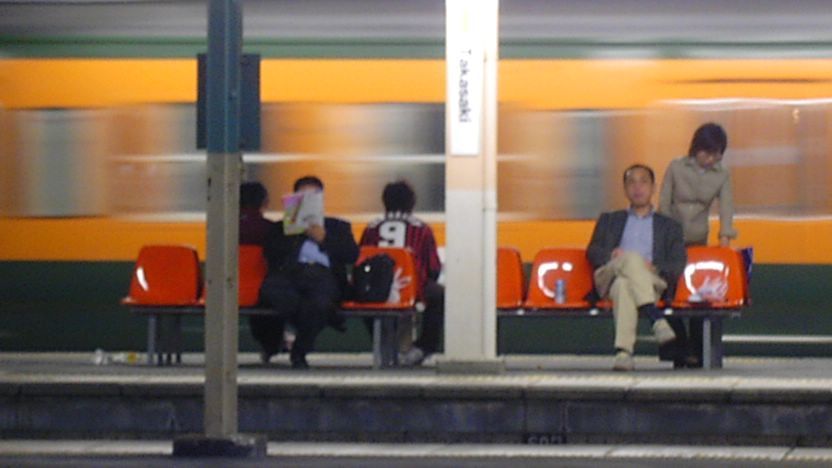
Purchase and exchange
There are two ways to purchase a Japan Rail Pass:
- Through the official website If you purchase the Japan Rail Pass through the official website , a start date within a one-month period is set at the time of purchase (can be modified later). The big advantage of purchasing the pass through the official website is that you can use a designated website for making online seat reservations even before arriving in Japan. Furthermore, you will need only your passport (and no voucher) to pick up your pass in Japan.
- Through online and offline travel agents Many travel agents - online and offline - are authorized to sell the Japan Rail Pass, including Japan Experience . If you purchase your pass through one of them, you will first receive a voucher, which needs to be exchanged to the actual pass inside Japan within three months of purchase. When exchanging the voucher to the actual pass, you set the start date to a date of you choice within a one-month period. An advantage of purchasing the pass through travel agents is that some allow you to purchase the pass in combination with other travel products and earn points and/or discounts.
The sale of the pass at train stations inside of Japan was discontinued in September 2023.
Who can use it?
The Japan Rail Pass can be used only by short term visitors to Japan ("temporary visitors"). It can also be used by Japanese nationals who can prove that they have been permanently residing abroad for at least the past ten years. But it cannot be used by residents of Japan.
Where and how can the voucher be exchanged?
The voucher can be exchanged at designated major JR stations across Japan, including the JR stations at Narita Airport and Kansai Airport . See this page for a list of designated stations and opening hours. Hand your voucher and passport (photocopy not accepted) to the ticket counter staff. After some processing, you will receive your Japan Rail Pass.
Selecting a starting date in the future
When you exchange your voucher to the actual pass, you do not need to start using the pass from the same date. You can select any date within a one-month period as your starting date. However, once the actual pass is issued, the starting date cannot be changed anymore. Those who purchase their pass through the official website select a starting date of their pass at the time of purchase, but can modify it afterwards if needed.
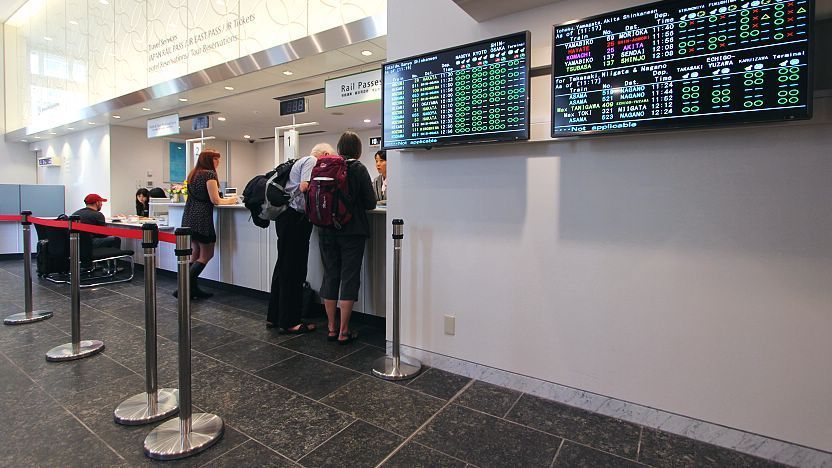
How to use the Japan Rail Pass
See our separate pages about the basics on how to use trains and shinkansen in Japan. Generally, the Japan Rail Pass is your ticket. No other ticket is needed except when using a reserved seat, in which case you will need to get a seat reservation ticket. Seat reservations are free with the Japan Rail Pass.
Rail pass holders can use automatic ticket gates
As of June 2020, pass holders can use the automatic ticket gates to enter railway stations. Previously they had to pass through the manned gate and present their rail pass to the staff.
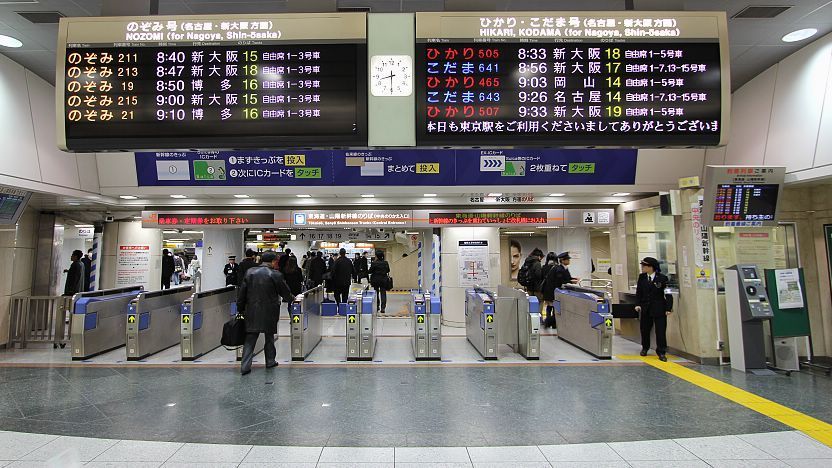
How to make seat reservations
Japan Rail Pass holders can make seat reservations for free at ticket machines or ticket offices across Japan after exchanging their voucher to the actual pass. Reservations cannot be made on board of trains. Those who purchased their pass through the official website can also make online seat reservations on a designated website. See the pages on how to use trains and shinkansen for more details about how to make a seat reservation.
Are seat reservations mandatory?
- Limited express trains in the Tokyo region, including the Narita Express to Narita Airport
- Hayabusa and Hayate trains along the Tohoku / Hokkaido Shinkansen
- Komachi trains along the Akita Shinkansen
- Tsubasa trains along the Yamagata Shinkansen
- Kagayaki trains along the Hokuriku Shinkansen
- Limited express trains from Osaka / Kyoto in the direction of Kanazawa , Amanohashidate , Kinosaki Onsen , Tottori and Kumano .
- Limited express trains from Sapporo in the direction of Hakodate and Kushiro .
- Sunrise Seto/Izumo night trains
In addition, Nozomi trains along the Tokaido / Sanyo Shinkansen become temporarily fully reserved during the New Year , Golden Week and Obon holidays.
Are seat reservations recommended?
Many trains do not book out, but some do, especially during rush hours and busy travel periods . For peace of mind it is always recommended to make seat reservations especially when traveling in groups and you wish to sit together. After all, seat reservations are free for rail pass holders. On a few trains reservations are mandatory (see above).
What happens if I miss a train for which I have seat reservations?
This may cause inconvenience to other passengers and the railway company and should be avoided by all means. If it does happen, try to cancel your reservation at a ticket office before it is too late. You can then ride a later train in the non-reserved section or make a new reservation for an upcoming departure.
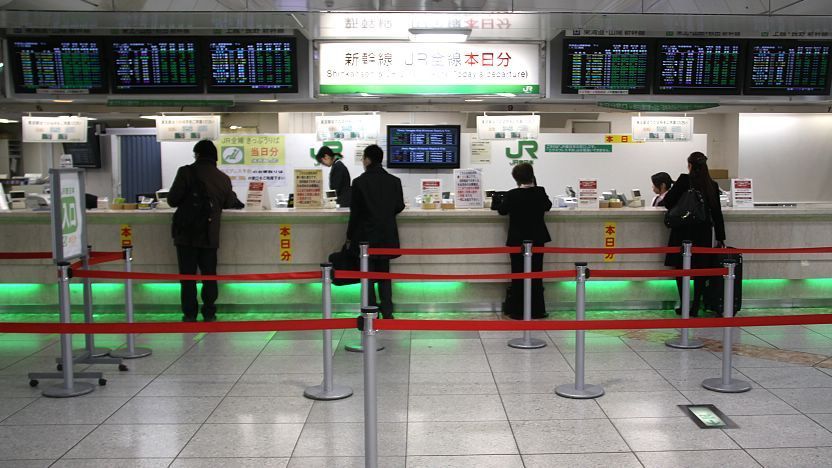
Does the Japan Rail Pass pay off?
Before the massive price increase of October 2023, the Japan Rail Pass would pay off easily for just a few long-distance rides. Now, however, the pass will be more expensive than regular train tickets or flights for most itineraries. It will pay off only for those traveling very long distances within short time periods - for example Tokyo-Kyoto-Hiroshima-Kanazawa-Tokyo within 7 days - or for people making multiple long-distance side trips from a base.
However, the pass remains a good deal for first-time travelers and others who are intimidated by the complexity of Japanese train tickets , and who do not mind paying extra for the convenience and flexibility provided by the all-you-can-ride privilege of the pass. For example, pass holders won't need to buy tickets whenever they ride trains and can spontaneously make side trips at no additional cost.
Is it useful for urban transportation?
Urban transportation alone will never justify the purchase of a Japan Rail Pass. A pass will only pay off if a lot of long-distance travel is involved. However, in cities that are well served by JR train lines, the Japan Rail Pass can also be useful for urban transportation.
Tokyo and Osaka are two of the few cities where the pass is quite useful thanks to Tokyo's Yamanote Line and Osaka's Loop Line. In many other cities, however, for example in Kyoto , non-JR trains, subways and buses are more convenient but not covered by the Japan Rail Pass.
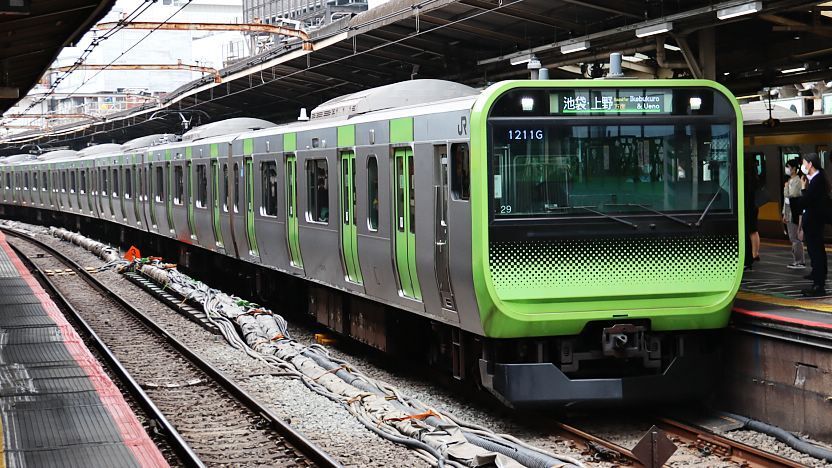
Questions? Ask in our forum .
Links and Resources
Japan rail pass.

- Media & Industry
- Meetings & Events
- Select Language 简体中文 繁體中文(香港) 繁體中文(臺灣) India (English) Bahasa Indonesia 한국어 ภาษาไทย Tiếng Việt Singapore (English) Philippines (English) Malaysia (English) Australia/New Zealand (English) Français Deutsch Italiano Español United Kingdom (English) Nordic countries(English) Canada (English) Canada (Français) United States (English) Mexico (español) Português العربية Japan(日本語) Global (English)
- India (English)
- Bahasa Indonesia
- Singapore (English)
- Philippines (English)
- Malaysia (English)
- Australia/New Zealand (English)
- United Kingdom (English)
- Nordic countries(English)
- Canada (English)
- Canada (Français)
- United States (English)
- Mexico (español)
- Global (English)
- Fujiyoshida
- Shimonoseki
- Ishigaki Island
- Miyako Island
- Kerama Island
- Tokyo Island
- Koka & Shigaraki
- Hida Takayama
- Ginza, Nihonbashi
- Beppu & Yufuin (Onsen)
- Ginzan Onsen
- Nagasaki Islands

- Kumano Kodo
- Shikoku Karst
- Amami Oshima
- Hachimantai
- Omihachiman
- Aizuwakamatsu

- Diving in Japan
- Skiing in Japan
- Seasonal Flowers in Japan
- Sustainable Outdoors
- Off the Beaten Track in Japan
- Scenic Spots
- World Heritage
- Home Stays & Farm Stays

- Japanese Gardens
- Japanese Crafts
- Temple Stays
- Heritage Stays
- Festivals and Events
- Theater in Japan
- Japanese Tea Ceremony
- Cultural Experiences in Japan
- Culture in Japan

- Local Cuisine Eastern Japan
- Local Cuisine Western Japan
- Local Street Food
- Japan's Local Ekiben
- Japanese Whisky
- Vegetarian and Vegan Guide
- Sushi in Japan Guide
- Japanese Sake Breweries

- Art Museums
- Architecture
- Performing Arts
- Art Festivals
- Japanese Anime and Comics
- Japanese Ceramics
- Local Crafts

- Scenic Night Views
- Natural Wonders
- Theme Parks
- Samurai & Ninja
- Iconic Architecture

- Wellness Travel in Japan
- Japanese Ryokan Guide
- A Guide to Stargazing in Japan
- Relaxation in Japan
- Forest Bathing (Shinrin-yoku)

- Experiences in Japan
- Enjoy my Japan
- National Parks
- Japan's Local Treasures
- Japan Heritage
- Snow Like No Other
- Wonder Around Japan

- Visa Information
- Getting to Japan
- Airport Access
- COVID-19: Practical Information for Traveling to Japan
- Anime Tourism
- Countryside Stays
- Accessible Tourism
- Hokkaido Great Outdoors
- Scenic World Heritage in Tohoku
- Shikoku’s Nature and Traditions
- Southern Kyushu by Rail

- Traveling by Rail
- How to Travel by Train and Bus
- JR Rail Passes
- Scenic Railways
- Renting a Car
- Sustainable Travel in Japan
- Travel Brochures
- Useful Apps
- Online Reservation Sites
- Eco-friendly Accommodation
- Luxury Accommodations
- Traveling With a Disability
- Hands-free Travel
- How to Book a Certified Tour Guide
- Volunteer Guides
- Tourist Information Center

- Japanese Manners
- Spring in Japan
- Summer in Japan
- Autumn in Japan
- Winter in Japan
- Cherry Blossom Forecast
- Autumn Leaves Forecast

- Japan Visitor Hotline
- Travel Insurance in Japan
- Japan Safe Travel Information
- Accessibility in Japan
- Vegetarian Guide
- Muslim Travelers
- Safety Tips

- JAPAN Monthly Web Magazine
- Arts & Cultures
- Nature & Outdoor
- Festivals & Events
- Insider Blog
- Things to do
- Local Guides
- Food & drink
- Traditional
- Hokuriku Shinetsu

My Favorites
${v.desc | trunc(25)}
Planning a Trip to Japan?
Share your travel photos with us by hashtagging your images with #visitjapanjp
GUIDE Japan Rail Pass The JR Pass, a convenient and affordable way to travel Japan by train
- Stories & Guides
- Japan Rail Pass
Make the most of your trip to Japan with a JR Pass
The Japan Rail (JR) Pass is a deal offered exclusively to foreign visitors traveling in Japan under temporary visitor status. It allows you to pretty much take unlimited rides on the JR network throughout Japan. Since the JR Pass was first created, the shinkansen (bullet train) network has greatly expanded, and now it's possible to ride the shinkansen all the way from Hokkaido to Kyushu.
From October 1st, 2023, a regular seven-day adult pass costs 50,000 yen, while those looking for a little more luxury can buy a Green Car (first class) pass from 70,000 yen. The 14-day regular adult pass is 80,000 yen, while the regular 21-day pass costs 100,000 yen.
Kids' passes are reduced by 50 percent for children aged between 6 and 11.

The shinkansen is one of the fastest, most convenient ways to get around Japan
What is covered?
Outside urban centers such as Tokyo and Osaka, the pass is best used to cover distance, as it does not include municipal subways and private suburban lines. With thousands of kilometers of track, the JR network connects you to attractions across Hokkaido, Honshu, Shikoku and Kyushu, the four main islands of Japan.
The pass allows you to ride many local buses operated by JR as well, including the tourist loop bus in Hiroshima, JR Hokkaido buses around Sapporo, and the local bus to Kusatsu Onsen. You can even ride the JR West Miyajima ferry, which operates from Miyajimaguchi, Hatsukaichi, Hiroshima and Miyajima.
NOTICE: Miyajima Visitor Tax
- From October 2023, visitors to Miyajima will be required to pay the Miyajima Visitor Tax. Please show your JR Pass at the service window of the JR West Miyajima Ferry and then pay the Miyajima Visitor Tax separately. https://another1000years-miyajima.jp/en/visitortax/index.html
The Japan Rail Pass makes plenty of famous attractions accessible, allows for easy and convenient travel across the country, and can save you money on your travels. Aside from discounted travel, some tourist facilities also offer special discounts or other benefits when you show your JR Pass.

What isn't covered?
There are some important exceptions you should know before deciding to buy a pass or not. For instance, the JR pass does not include rides on the Nozomi (the fastest service on the Tokaido-Sanyo Shinkansen route) or Mizuho trains (fastest on the Sanyo-Kyushu Shinkansen route). If you're traveling on these lines, be careful which trains you board, as passengers who ride the Nozomi and Mizuho with a JR Pass will have to buy an additional ticket before boarding. However, purchasing these additional tickets includes added benefits, like being able to ride from Tokyo to Hiroshima without changing trains, for example.
In cities like Tokyo, the pass doesn't give you access to the subway and metro lines, so you might find it a little inconvenient if you will spend most of your time in one major urban area. Many of the major attractions have JR stations nearby, but if you find a quicker or more convenient route on the subway, you will have to pay extra. Using a pre-paid IC travel card, though, is a convenient way to make use of both private railways and JR lines. However, some suburban "liner" express trains on the JR network, aren't included either, and passengers need a special separate ticket to board them.

It's also important to note that Japanese railroad networks can be extremely complex, so sometimes JR trains will also use private railway tracks. In these cases (as well as those involving JR express buses), additional fees may apply.
How do I get a JR Pass?
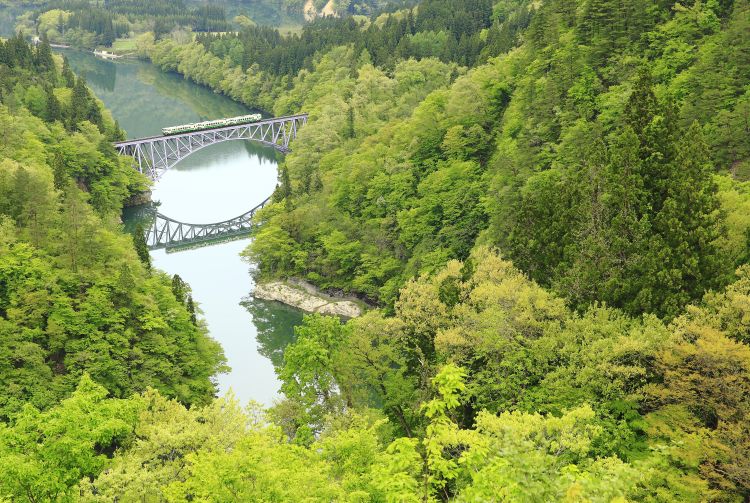
How do I use it?
When you arrive to Japan, you can pick up your pass or exchange your voucher at a designated pickup location. Make sure to have your passport, temporary visitor stamp or sticker and your exchange order or reservation number ready before you arrive at the counter to ensure a smooth exchange. Once you receive your JR Pass, you can start using the trains. The JR Pass itself is your ticket, and you can sit in any of the available seats of the non-reserved seat cars except when you reserve a seat, in which case you are issued a seat ticket.
You can make reservations on most shinkansen and other long-distance travel (like limited express trains) for no extra cost with your JR Pass. Making seat reservations is a good idea, especially if you're traveling during peak times and seasons, or riding the first or last trains of the day.
Some trains, including the fastest shinkansen like the Hayabusa (Tohoku Shinkansen), and Kagayaki (Hokuriku Shinkansen), certain limited express trains and some popular sightseeing trains don't offer non-reserved seats, so seat reservations are mandatory. Seat selection is generally not available on local and urban trains, but some quick web research will help you to confirm.
JR Pass holders can now use the automatic gates at stations when available, and if you have additional tickets you can stack them and feed them into the machine at once.
Travel tip: if traveling in the direction of Kyoto and Osaka from Tokyo on the shinkansen, reserve a window seat on the right for a view of Mt. Fuji.
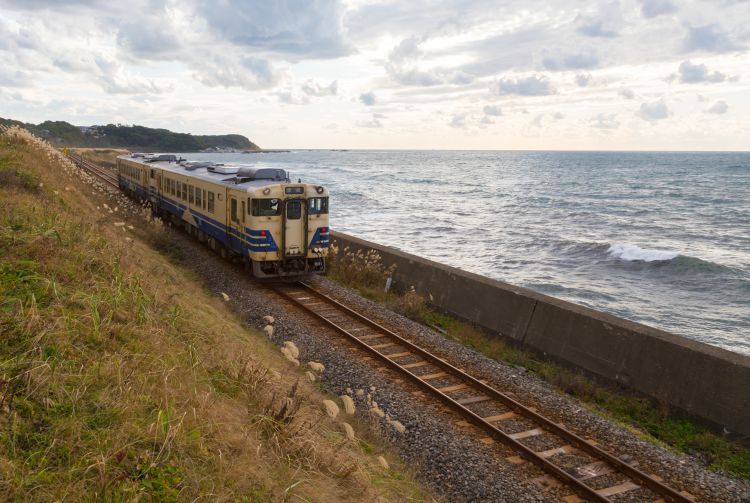
So, should I buy it?
If you're hoping to cover a lot of ground, want to use the shinkansen for day trips, or even if you'd prefer to avoid air travel, toll roads, highways, and long-distance buses, the JR Pass might be a good investment. However, if you choose to spend most of your time exploring Tokyo or Osaka, it may be wise to look into subway passes, or area rail passes.
The potential disadvantage to owning a JR Pass might be trying to squeeze too much into your itinerary to maximize your discount or, the opposite: buying a pass and not using it to its full potential. Both of these scenarios can be avoided with a little planning.

Even rural spots are within reach
JR Pass alternatives
Regional JR passes offer unlimited rides in specific areas. If you plan to travel extensively through Western Japan (Kyoto, Osaka, Hiroshima, etc.), consider JR-West Rail Passes. If you'd like to focus your travel on the eastern parts (Tokyo, Nagano, Niigata, and Tohoku), look into the JR East Pass.
The latest information may differ, so please check the official website.
* The information on this page may be subject to change due to COVID-19.
- Bullet Train
- Travel Information
- Travel Deals
- Travel Passes
- Travel Tips
Did this information help you?
out of found this information helpful.
Thank you for your feedback.
Recommended for you.
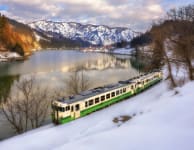
Please Choose Your Language
Browse the JNTO site in one of multiple languages
The Regional JR Passes 地方のJRパス
- Published on : 13/08/2015
- Add to favorites
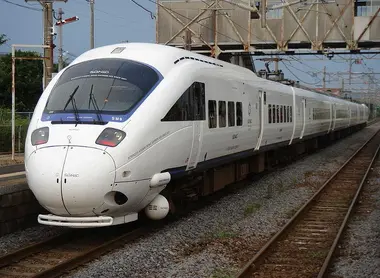
Regional Passes
A Regional JR Pass can be useful if you would like to visit a particular region of Japan. Here's a quick overview!
The Japan Rail Pass allows tourists unlimited travel on the entire Japan Railway network!
But there are also regional variations, less expensive, and very useful and advantageous for travelers wishing to explore specific regions of Japan.
JR Regional Passes
- Hokkaido PASS: for lovers of trekking and nature parks of Hokkaido;
- East PASS: to explore Tohoku, the Nagano Alps and the Shimoda coastline;
- Central PASS: for visiting Nagoya, Takayama, Kanazawa, Kyoto and Osaka;
- Kansai PASS: Kansai and its wonders Kyoto, Nara, Osaka, Kobe, Himeji;
- Shikoku PASS: to discover in depth this charming, picturesque island;
- Kyushu PASS: visit cosmopolitain Fukuoka, the "Naples of Japan", Kagoshima, the volcanoes of Kumamoto.
National or Regional JR Pass?
Everything of course depends on the length of your stay, but also your journey! If you are creating an itinerary that includes Tokyo - Kyoto - Hiroshima - Tokyo, then the National Japan Rail Pass is required.
However, a simple round trip Tokyo - Kyoto is often not cost-effective; in this case, the choice of one or more regional JR Pass may be appropriate. In short, make the right calculation!
Latest Articles
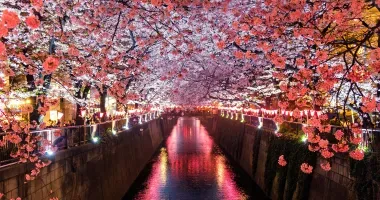
Where to admire the cherry blossoms in spring
Japan is renowned for its distinct and beautiful seasons. One of the most eagerly awaited is undoubtedly spring, with the blossoming of the sakura cherry trees.
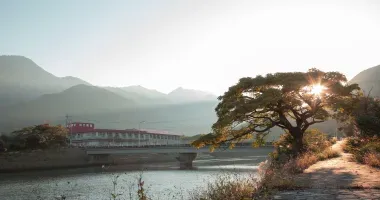
Excursion to Yakushima: At the heart of Princess Mononoke Island
Many visitors to Japan share the same desire when visiting the country: to " get off the beaten track ".
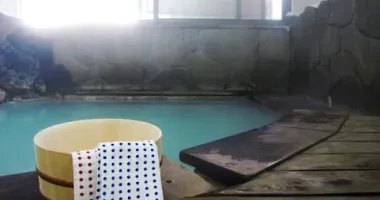
Onsen: a short guide to proper etiquette
Onsen (hot springs) and sento (public baths) are great places to relax. They are distinct communal areas with very precise rules of good conduct and etiquette.
All the themes of the city

Japanese Food and Drink

Books on Japan

Japanese Movies

Japanese Language

Japanese History

Understanding Japan

Before you Travel
Please select your country on the list below:
- Switzerland
- United Kingdom
- Other countries
- Itineraries
- Tours and Activities
- Travel Guides
- Best of Japan
JRailPass.com » Japan Travel Blog » Japan in 7 days: Travel itinerary
Japan in 7 days: Travel itinerary
November 8, 2022
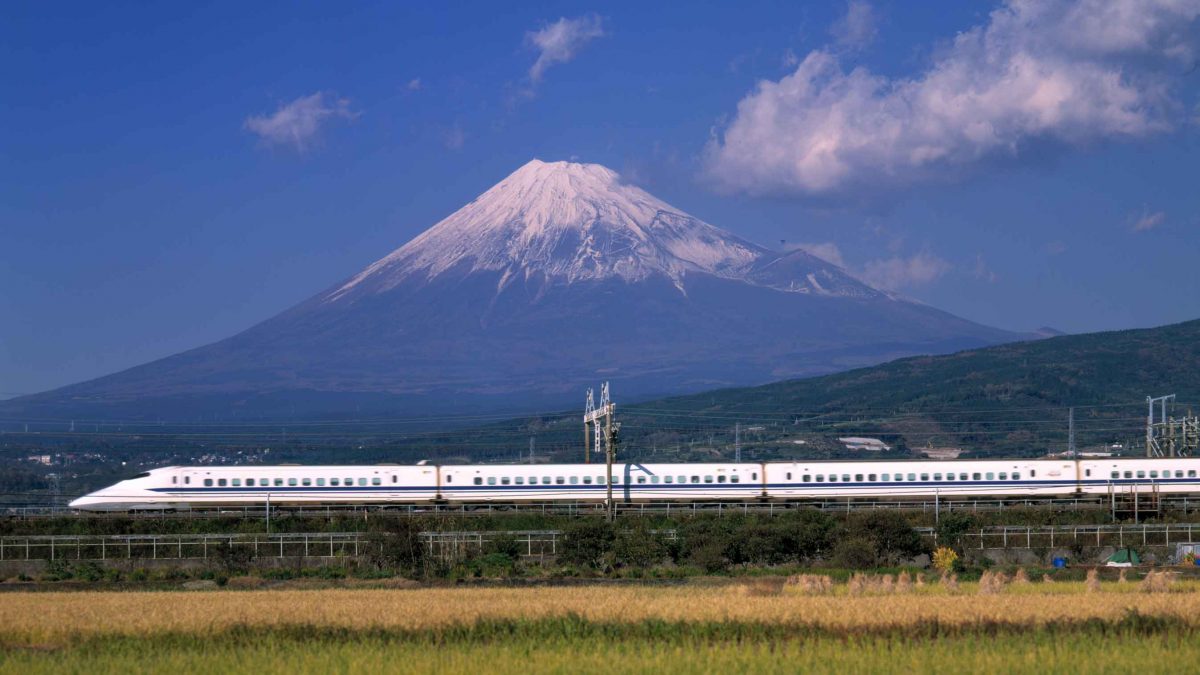
Visiting Japan for the first, second or even third time can be scary. It is not an easy task to get around in Tokyo or figure out what to see from the countless number of giant temples, beautiful parks, large shopping streets and fresh restaurants.
That is why we have prepared our top “7 days in Japan” itinerary and recommendations so that you can travel, see and explore the greatest sights of the country with your Japan Rail Pass.
Day 1: Tokyo
Arriving at narita or haneda airport.
Refer to our three days in Tokyo article for more detailed information on how and where to exchange your Japan Rail Pass, take the Narita Express (or the Tokyo Monorail from Haneda) and arrive at the city center of Tokyo.
Odaiba, Hama Rikyo and the Edo-Tokyo Museum
- Start your trip off by visiting Odaiba , one of the newest, most vibrant shopping and entertainment centers of Tokyo.
- While there, take advantage and visit the Tokyo Tower , a communication station and a Japanese replica of the Eiffel tower, offering fantastic views of the city from above.
- Escape from busy Tokyo life by visiting Hama Rikyu, a small but lovely park, offering beautiful walks among 300-years old trees and fish ponds.
- And for a piece of history, the remarkable Edo-Tokyo Museum is the place for children and adults to discover the past of Japan, specifically focusing on the Edo period between 1603 and 1868.
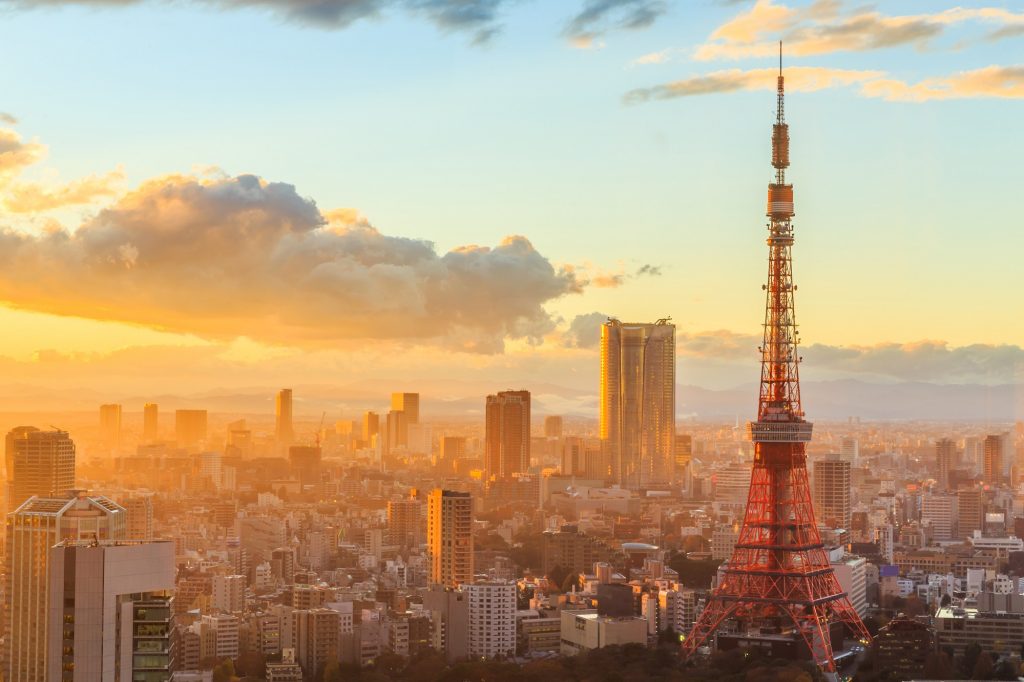
Day 2: Tokyo and Kamakura
Taking a trip to kamakura.
Just an hour away from Tokyo, the Kamakura region has plenty to offer. You can get there with your Japan Rail Pass, by taking the Tokaido Line from Tokyo Station and making one connection at Totsuka Station, by changing to the Yokosuka Line, until you arrive at Kamakura Station.
Once there, make sure not to miss:

- Zeniarai Benten Shrine – A magical place, where people (local as well as foreigners) go to wash their money and have a spiritual experience. The saying goes that whatever you wash in the shrine’s spring, it will double.
- The Kamakura Beaches – Whether you are going in the summer and wish to experience the cultural difference between your home beaches and those of Japan, or you are visiting in the autumn/winter seasons, you shouldn’t miss out on the sandy coast Kamakura has to offer.
Book your Japan Rail Pass now
Day 3: Tokyo
Shibuya, yanaka and ueno.
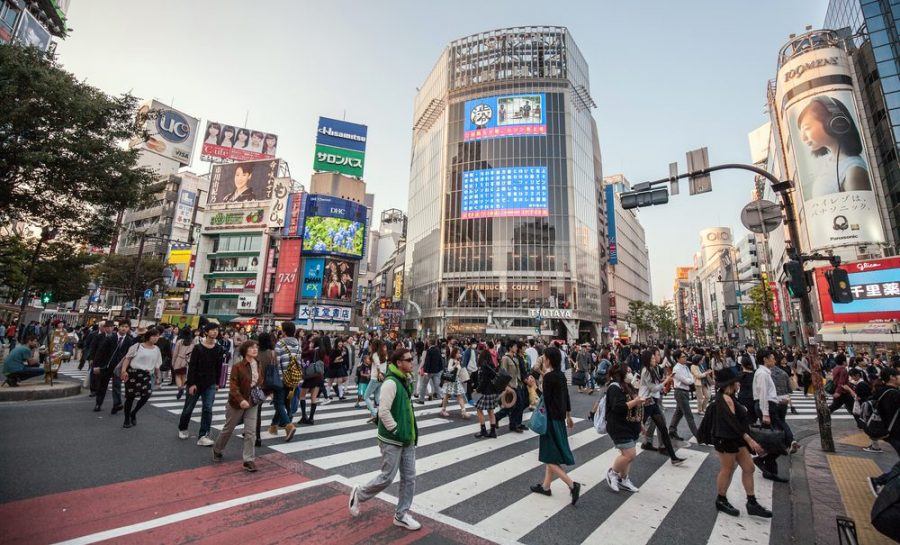
- Yanaka – Just a 40 minute ride away (take the Yamanote line), Yanaka will fascinate you with its fully reconstructed temple, narrow streets, and tiled-roof houses. Yanaka is not the most touristic place, which makes it perfect for a peaceful walk, filled with history and stories from the past.
- Ueno – Within walking distance from the Yanaka area, the gorgeous and never-ending Ueno area includes the Ueno Park and Zoo, Tokyo University of Arts, National Museum of Nature and Science, National Museum of Western Art, Tokyo Metropolitan Art Museum, Tokyo Bunka Kaikan concert hall and more.
Day 4: Kyoto
Arashiyama, iwatayama and tenruy-ji temple.
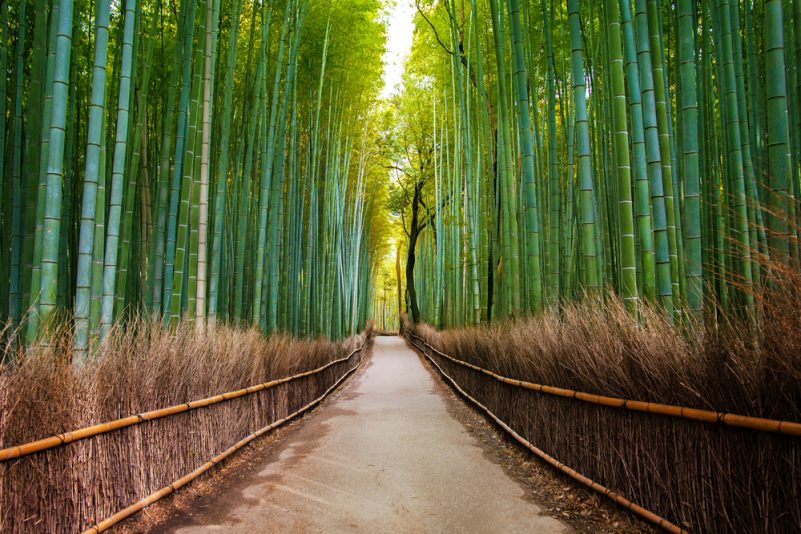
- Monkey Park Iwatayama – A must for nature and animal lovers. You can walk freely around this area where monkeys live and play. It’s safe to give them food and watch how mothers and their little ones walk around and study you, just like you are studying them.
- Tenruy-ji temple – a world heritage site, this is one of the most beautiful Zen temples in Kyoto, especially during the cherry blossom season (last week of March – first week of April). The gardens are gorgeous and boast a spectacular view of the surrounding mountains, especially when the sun rises.
Check out our article Arashiyama Bamboo Forest and district for more details.
Day 5: Kyoto
Nanzen-ji, fushimi inari and kinkakuji (golden pavilion).
- Nanzen-ji – This Zen temple is the very definition of a perfect Japanese temple. With its Zen gardens, giant entrance doors, and some smaller temples, the Nanzen-ji has everything there is to offer to Japanese culture lovers.
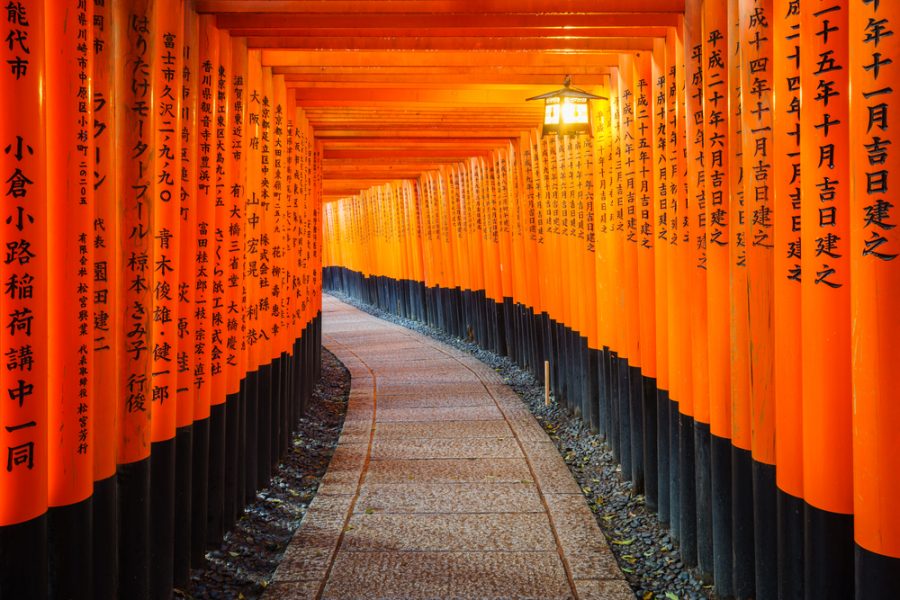
- Kinkakuji (the Golden Pavilion) – A unique Zen temple whosre top floors are covered in gold leaf. Visitors are not allowed on the first floor of the building, which houses historical Buddha statues. However, the windows on this floor are usually open, so tourists can look through and enjoy the ancient ambiance of the temple. Close to the exit, you can sip on traditional tea and tasty treats.
Day 6: Nara
Take the JR Nara Line from Kyoto Station for less than an hour to reach Nara – the first permanent capital of Japan and one of the few cities packed with so much cultural heritage, including:
- Isuien Garden – Gorgeous ponds give life to the incredible nature surrounding the gardens, making you feel welcome and at peace. Isuien has actually two different parts, each offering tea houses and authentic Japanese atmosphere.
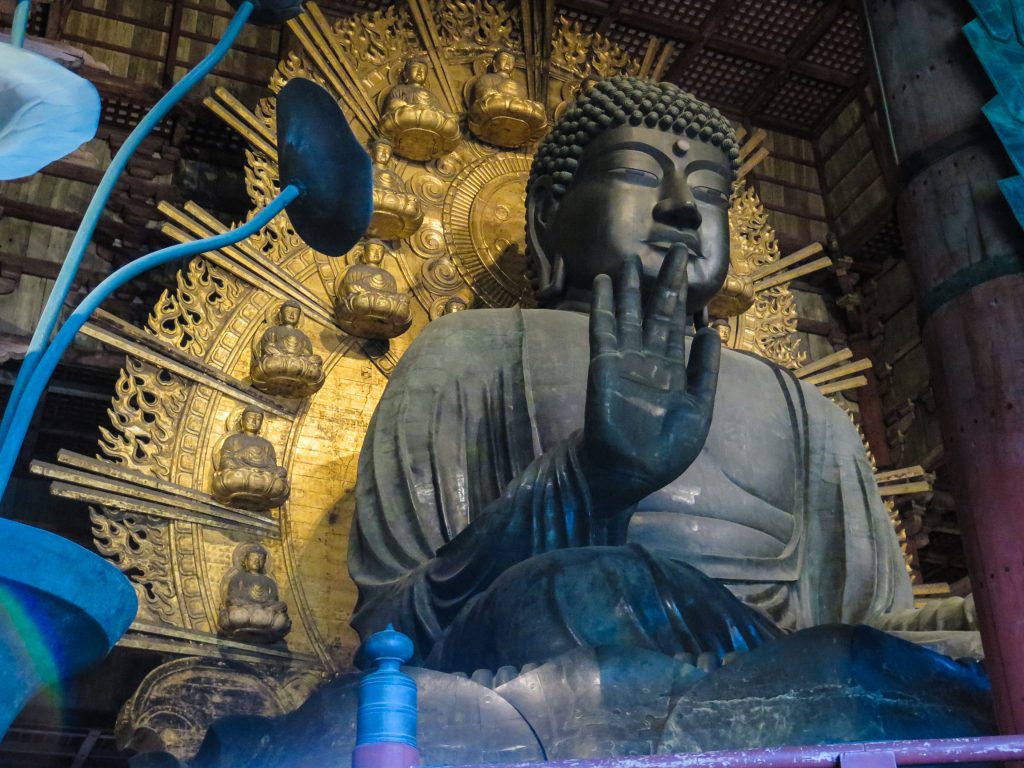
- Hōryū-ji Temple – Founded by Prince Shotoku in 607, this temple was designated a World Heritage Site in 1993. It’s a must-visit just to see some of the oldest surviving wooden buildings in the world!
Day 7: Back to Tokyo
Take the Shinkansen train back to Tokyo and get ready for your trip back home. Depending on your schedule, you can check out the districts of Asakusa and Harajuku , the first stops on our 10-day itinerary and 14-day sample itinerary .
Otherwise, you can say goodbye to the city with the views from the top of the Metropolitan Government Building in West Shinjuku.
Note : Do not forget that you can use your Japan Rail Pass to take the Narita Express or the Tokyo Monorail to Haneda airport for free. Make sure to reserve your seats before boarding!
Related posts
Related tours & activities.
Hello, is it possible to go from Tokyo to Okinawa with JR Pass? Thanks! Viktoria
Hi Viktoria! Okinawa Prefecture consists of more than 150 distinct islands, all of which lie 400 miles from mainland Japan. This sets Okinawa apart and thus most travelers to Okinawa do so by air. Alternatively, ferries depart for Okinawa from Kagoshima. None of this is covered by the Japan Rail Pass . Happy travels!
Can you look at the map before asking such a silly question? Can you take Amtrak from Miami to Puerto Rico? Pfew!
I’m travelling to Japan on July with my daughter, I have a tourist visa but my daughter is now a Canadian citizen, so she doesn’t need a “Tourist Visa”… can I still get a JR pass for her?
Hi Gerz! Due to diplomatic agreements, citizens from selected countries are exempt from applying for a formal Japanese Visa prior to the travel. In these cases, the traveller´s passport will be stamped with the Tourist Visa during the Immigration check upon arrival in Japan. Remember that the Tourist Visa is the only visa which allows you to obtain and use the Japan Rail Pass . Happy travels!
Will I be able to take the shinkansen on May 6? I read something online that the train is not available on Apr 27- May 6 and I won’t be able to ride the train on those dates. Please confirm that I will be able to leave from Tokyo to Osaka on May 6 with the shinkansen using the JR pass. Thank you for your help.
Hi Angie! During the Golden Week , which makes 10 bank holidays in the country, Shinkansen bullet trains will still be working since there will be more people than usual travelling around the country. Happy travels!
Hello; How do I go from Tsuruhashi station (in Osaka) to Nara using my JR pass?
Very respectfully Fernando Dietrich
Hi Fernando! First you will have to reach JR Osaka Station and once there take the Yamatoji Rapid Train to JR Nara Station. These trains run once per hour; the trip lasts around 45 minutes and is covered by the JR Pass . Happy travels!
Hello, My husband and I are traveling to Japan for his 30th birthday on May 27th. After reading several comments I am still a tad confused. I want to purchase the 7 day JR pass, however, I am confused on what it entails. If I purchase the 7 day pass are we on the train for 7 days straight? Or do we get on the train in the morning and go home(to our hotel) each night? Also, does this pass also work for the smaller metro stations for touring locally around the city of Tokyo? Or any other major cities? Please help! Thank you!
Hi Mrs. Grimes! The Japan Rail Pass is a multi-use all-you-can-ride discounted rail ticket. It gives you unlimited access to all Japan Rail National trains, as well as JR bus services, ferry services, and airport transfers. Happy travels!
Hi there, We are going to Japan this coming May for 6 days, is there a JR pass for 6 or 5 days only just to cover the days that we are in Japan. Thank you very much. Mahalia
Hi Mahalia! A Japan Rail Pass can be valid for either 7, 14 or 21 consecutive days and hence you wouldn’t be able to purchase a pass of a different duration. Please note the Japan Rail Pass is the biggest discount on public Japanese transport available and usually even when one travels less days than pass it still pays off. Happy travels!
Hello, can someone please help me know which trains to take for the travel itinenary below:
From Tokyo -> Hiroshima -> Kyoto –> Tokyo on a 7 day rail pass.
Please find directions below, all of them fully included in your Japan Rail Pass :
– From Tokyo to Hiroshima : You can use your JR Pass to take the Tokaido Shinkansen line’s Hikari bullet train from Tokyo Station to Shin-Osaka Station, Shin-Kobe Station or Himeji Station. Once in one of these stations, you can transfer to the Sanyo Shinkansen (Sakura train) and arrive in Hiroshima at Hiroshima Station. – From Hiroshima to Kyoto: Kyoto and Hiroshima are connected by the Tokaido and Sanyo Shinkansen lines. You can use your JR Pass and the journey between Kyoto Station and Hiroshima Station. – From Kyoto to Tokyo: You should take the Shinkansen Hikari bullet train from Kyoto Station and arrive at either Tokyo Station or Shinagawa Station in central Tokyo.
Happy travels!
my 2 sister and i are planing to visiti nagoya -tokyo-hokkiado this may. can you helpy me the cheapest transportation from nagoya-tokyo-hokkaido? our travel date is may 28-may 5 flight mnl-nagoya & Sapporo-manila :).
Hi Joy! In your case even when you are just making 2 big trips a 7-day Japan Rail Pass would be cost effective. Nagoya to Tokyo already costs 10,500 yen and Tokyo to Sapporo (in Hokkaido island) 26,500 yen. A 7-day Japan Rail Pass costs 29,110 yen which is less than the 37,000 yen you would pay in individual tickets. In addition, when you start factoring in the money you would spend on the metro, buses, transfers, and ferries, then the savings become a must. Happy travels!
Hi. Need help with an itinerary. We plan to visit the following places in Japan: Tokyo, Alpine Route, Shirakawago, Kyoto, Nara and Osaka. I’m confused, it’s overwhelming to me. My concerns are: 1. How much would our budget be for all these OR for some of these? Our budget is between big savings and comfort as well. So please send us some options. 2. Among those places, what can we afford to miss? We are first-timers. Thanks so much! We look forward to your response. Sincerely,
Hi Lissie! We recommend you to contact a travel agency. We only have details on Japan Rail Pass cost and thus are unable of providing costs for different itineraries. We would like to recommend you to check our article How much does it cost to go to Japan? in case it is of help. Happy travels!
Hello! Can someone help me know which stations to travel?
We are going from Tokyo -> Hiroshima -> Kyoto – Tokyo on a 7 day rail pass.
Also, 9 of us travelling but my one daughter is on student exchange which means she has a student visa. I just read she is not eligible. Now I am in a bit of a panic – what do I do for her?
Hi Kristin! As you have read, the Tourist Visa is the only visa which allows you to obtain and use the Japan Rail Pass . We recommend you to purchase individual tickets for the person that is not eligible for the pass. Happy travels!
Hello, We are travelling to Tokyo and staying there for 4 nights (July 10-14). We plan to visit Tokyo, Mt. Fuji and Kyoto (including major tourist sites and nara) by using Japan rail pass as our main means of transportation. Any suggestions on the train stations and if there are any other passes we need to purchase in conjunction with the JR pass.
Hello we are traveling to Japan In July arriving in Tokyo July 9th and leaving July 17th out of Tokyo. I am thinking we will do Tokyo and Kyoto as home bases but def want to visit the Mt. Fuji region. Where is it easiest to do a day/overnight trip from? Also looking for must see sights on our 7 day trip and the most economical way to do that using the pass.
Hi Bronislava! It will be easier to visit the Mount Fuji area from Tokyo.
Hi Team! We’re going to travel in Japan for 9 days and our target places are in Chubu area, Osaka & Tokyo. Can we use it in those places? Are there connecting lines in each of it? Are target places in Chubu are Aichi, Shizuoka, Gifu & Nagano. What is the best option? Looking forward to your response. 🙂
Regards, Rona
Hi, we’ll be in Japan for 7 nights flying into and out of Tokyo Narita, and we just bought the JR Rail Pass. We are considering the following itinerary options. Which would you recommend? Or something else? 1. arrive Tokyo, immediately take train to Kyoto. Spend 3 nights in Kyoto. Train to Hakone. 1 night Hakone. Train to Tokyo. 3 nights Tokyo 2. Same as above but 4 nights Kyoto and we won’t visit Hakone on this trip.
Hi Greg! Our best tips for a 7-day trip around Japan is the one described in this article. Japan is a huge country but we believe you can get a good taste of it!
Hello we are going to travel to Japan on May 27 Arriving at Narita Airport and depart Japan on June 4 , 2018 via Kansai Osaka airport. I plan to visit Hakone Mt Fuji, Kyoto, Tokyo, Osaka and what some other places Iyou can recommend if I will buy Japan rail pass is it Fitted in my etinerary if not What Pass can u recommend. I will be staying 3 night in Tokyo( May 27 to 30 ) and 3 night in Osaka ( June 1 to 4) . Im still in the decision making if Where Im gonna spend my 2 nights ( May 30 and 31). I need advice Thank you in advance.
Thank you very much, Margie Judan
Since you are staying longer than the travel period stated in this article we recommend you to check the followig: 10 days in Japan: Travel itinerary . There you will find our best recommendations to get to seize your Japan Rail Pass while discovering the whole country in 10 days.
Our family of 5 is traveling to Japan in April and looking for your advice for the most efficient use of our pass and best time to cover cherry blossom season. We are purchasing a 7 day Green pass. Planning to stay for 3 nights in Tokyo with possible day trip to Nikko, 3 nights in Osaka with day trips to Kyoto, Nara, and Himeji and 1 night in Odawara / Hakone to see Mt. Fuji. We are arriving to Narita on April 2 around 4 pm and flying out of Narita on April 9 at 5:45pm.
Thank you for your help!
Hi Travelty! We recommend you to check our 2018 cherry blossom forecast for Japan You can still see the full bloom in Tokyo (until around April 3rd), and this weekend in Kyoto (until around April 5th). Please keep in mind that most flowers usually take a week to reach full bloom once flowering has begun and that full bloom also lasts around a week.
Hello! I will be flying into Narita on May 15 2018, then flying out from Narita on May 20th 2018. I want to see Kyoto during my 5 day visit, was wondering if you can recommend the best way to fit in a trip to Kyoto in a 5 day trip. I plan on purchasing a JR Rail pass and will rely heavily on public transportation throughout my trip. Thanks!
Travelling between Tokyo and Kyoto is extremely easy with the Japan Rail Pass. You should take the Shinkansen Hikari train from either Tokyo Station or Shinagawa Station in central Tokyo, and arrive at Kyoto Station. A standard Tokyo to Kyoto trip with the JR Pass takes close to 1 hour and 40 minutes taking the Hikari Shinkansen so it should be easy to include a day trip to Kyoto.
For some great suggestions and recommendations on which places to visit and what to do in Kyoto, check out our Japan in 14 days (day 4-6) article.
Enjoy your time in Japan!
I am travelling with my parents (in early 70s) together with my 2 siblings to Tokyo on Feb 25, 2018. We plan to go places on our own (without tour guide) so we can visit places on our own pacing exploring Tokyo. Initially, I wanted to stay the whole 7 days in Tokyo. But if I’m going to buy the JR Pass East, we might as well visit Nagano or Niigata to experience the cold Winter (will it still be cold?). OR can we just visit Mt. FUji and still have the Snow experience? How do we go to the local places? Do I need to buy tickets for taking local bus transpo or does the JR Pass covers it.
I hope you can help to give more recommendations.
Thank you, Tine
Hello JR team,
Any recommendation on my earlier email?
Hi Christine!
The way to both Nagano and Niigata from Tokyo is included in your Japan Rail Pass . The Hokkaido Shinkansen departs from Tokyo Station and rides all the way to Nagano Station. The Joetsu Shinkansen will take you straight from Tokyo to the Niigata prefecture in just two hours. Those locations are among the preferred visits for skiers and snowboarders so you may get a chance to experience the cold.
Mount Fuji will also provide a good snow experience and is accessible almost fully with the Japan Rail Pass too. To get there take JR Tokaido line for Kozu from Tokyo Station, using your JR Pass. Once at Kozu (Kanagawa), take the JR Gotemba Line for Numazu, also included in the JR Pass, and get off at Gotemba Station. Once at Gotemba station, take a bus to Subashiri 5th station (not included in the pass), the gateway to climbing Mount Fuji.
We hope you enjoy your trip!
I am travelling to Japan for the first time in April/May with my elderly father, we are keen to visit Tokyo, Kyoto (probably via day trip) and Osaka during our 7days in your country.
Grateful if you could assist us in navigating the best options for rail travel for our proposed itinerary. We would like to get the full bullet train experience from Tokyo to Osaka (and return) if possible. Can you please also advise if JR / Shinkansen offers discounts to seniors/over 70years?
Monday 30 April – arrive Tokyo (Narita) at 1755hrs – we will be staying in the Shinjuku area
Thursday 3 May – travel from Shinjuku to Osaka – we will be staying in the Dotonbori area
Monday 7 May – Osaka (Dotonbori area) to Tokyo (Narita) airport – departing Toyko (Nartia) at 1955hrs
Thank you for taking the time to respond to my query.
No senior discounts apply to the Japan Rail Pass . However, keep in mind that the Japan Rail Pass prices allow to save up to 62% in individual train tickets.
The Japan Rail Pass will cover all your itinerary:
– Transportation from Narita Airport to Tokyo city center in the Narita Express . This same train will take you to Shinjuku Station . – Shinjuku is also part of the Yamanote Line which is probably the most popular and convenient way for getting around Tokyo. – Tokyo, Kyoto, and Osaka are connected with by the Tokaido Shinkansen line, included with the Japan Rail Pass. – While in Osaka, you will be entitled to make full use of the Osaka Loop Line .
I want to use the Itinerary for my trip in March 2018 – can you tell me which lines I should take to make it to the places on the itinerary?
Hi Natalie!
You can check the transportation you need to take for your itinerary at Hyperdia – the number 1 Japanese online transportation planning tool. It will enable you to precisely plan your trip in Japan from station to station with punctuality to the second.
Thanks for sharing this post. It’s really a big help for us during our last visit in Japan.
Cheers from Cebu!
Would like to ask about the JR Tokyo Wide Pass. It is ¥10,000 & have to use it for 3 consecutive days. May I know which area does this covers? Planning to go to Disneysea, Mt Fuji & Gala Yuzawa using this method. Please advise.
All details regarding JR Tokyo Wide Pass are available at JR East official website. Please make sure to visit it to have the most updtaed information.
I will be arriving Haneda Airport, what train to take to go to Hotel Mystays Hamamatsucho? We will be in Japan for 7 days, trying to put together a list of all place to visit. Any suggestion?
From Haneda Airport you can take the Tokyo Monorail, covered by the Japan Rail Pass, to central Tokyo. Once you are there you can take any of the JR lines included in the Japan Rail Pass that take you around the city: the Yamanote Line , the Keihin-Tohoku Line, the Rapid Chuo Line, the local Chuo-Sobu Line and other metropolitan lines that circulate on the outskirts of the city such as the JR Keiyo, Musashi, Nambu and Yokohama lines. Just make sure to locate your hotel and what lines take you there!
Our best recommendation for a 7-day trip in Japan is available in this article you have already read. We recommend you to further surf our blog if you want to get further insight on what to see when you are in Japan.
I will be in Japan for 7 days ( November 15th – November 21st 2017) ( party of 3 ). We would like to visit Kyoto & Tokyo using Japan Rail Pass.
My question is : should I fly in Kyoto first then leave from Tokyo ? Please advise
Hi Richard!
You can visit first any of the cities since it makes no change – just plan your trip as you prefer. If you travel with a Japan Rail Pass you are entitled to transfer from Narita Airport to Tokyo and also from Kansai Airport to Kyoto at no additional charge, as well as to travel between Tokyo and Kyoto unlimitedly.
This is my itenerary for Japan…. I want to purchase a 7 day rail pass, but when do you think it makes most sense to use up the 7 days considering I will be in Tokyo for 10 days….see below itenerary. I would rather save the 7 days for when the costs will be highest. Any advice?
April 19 Thursday Tokyo – Arrive in airport at 10pm April 20 Friday Tokyo April 21 Saturday Tokyo April 22 Sunday Tokyo (possible day trip to nakamura) April 23 Monday Tokyo (day trip to Nikko) April 24 Tuesday Travel to Mt Fuji April 25 Wednesday Travel to Kyoto April 26 Thursday Kyoto April 27 Friday Osaka April 28 Saturday Osaka April 29 Sunday – Leave to Osaka Airport
The most important to keep in mind is that the Japan Rail Pass will be more economical the more you travel. Please be aware you can use it in most of your trip:
– From Narita Airport you can take the Narita Express to central Tokyo at no additional cost. – Once you are in Tokyo, you can use several lines within the city: the Yamanote Line , the Keihin-Tohoku Line, the Rapid Chuo Line, the local Chuo-Sobu line and other metropolitan lines that circulate on the outskirts of the city such as the JR Keiyo, Musashi, Nambu and Yokohama lines.. However please make sure to check which parts of the city you want to visit since most likely you won’t be able to access them all only using your Japan Rail Pass. – Nikko is one of many interesting day trips from Tokyo made possible using your Japan Rail Pass since traveling time is less than 2 hours from Tokyo by train and at no additional charge when traveling with the Japan Rail Pass. – Mount Fuji can be easily reached with the Japan Rail Pass via Gotemba: you just have to take JR Tokaido line for Kozu from Tokyo Station, using your JR Pass; once at Kozu, take the JR Gotemba Line for Numazu and get off at Gotemba Station. – Travelling between Tokyo, Kyoto and Osaka with the Japan Rail Pass is easy. You should take the Tokaido Shinkansen line that connects three cities. – Numerous trains in and around Kyoto can be accessed using your Japan Rail Pass. – While in Osaka, you will be entitled to use the Osaka Loop Line at no additional cost if travelling with the Japan Rail Pass. – Last but not least, to get from Osaka to Kansai Airport you can take the Haruka Express , also included in the Japan Rail Pass.
If you want to check the costs of each individual trip to make your decision you can check Hyperdia – the number 1 Japanese online transportation planning tool. It has the most updated and useful information you can get.
Very happy travels!
Hello, confirmed our trip to Japan from Jan. 1 to Jan. 6.
Jan. 1 – arrive Narita 2 PM start exploring Tokyo after check in Jan. 2 – explore Tokyo Jan. 3 – depart for Mt. Fuji area (is a day trip enough for Mt. Fuji?) – taking train to Kyoto late afternoon (bullet train?) Jan. 4 – Kyoto (doing a Ryokan for 1 night). Is it better to do the Ryoan in the Mt. Fuji area? Jan. 5 – Kyoto area – depart for Osaka in the morning Jan. 6 – Fly out of Osaka late afternoon
Will the JR pass be able to cover all the routes mentioned above? Do we need to stay overnight at Mt. Fuji and do the Ryokan there or is it better to do a day trip to Mt. Fuji area and do the Ryokan at Kyoto coming from Mt. Fuji? Also, is it better to buy the JR pass here in the US now than getting it close to our travel date or getting it there perhaps? Any recommendations or suggestions for this short trip? Looking forward to your response. Thank you!
Yes – the Japan Rail Pass will cover all of your trips.
– To get to central Tokyo from Narita Airport you can take the Narita Express at no additional charge. – Within Tokyo there are some lines you can use to explore the city, such as the Yamanote Line , the Keihin-Tohoku Line, the Rapid Chuo Line, the local Chuo-Sobu and other metropolitan lines that circulate on the outskirts of the city such as the JR Keiyo, Musashi, Nambu and Yokohama lines. – Mount Fuji can be scheduled as a day trip from Tokyo since it should be only a little over 2 hours from Tokyo.
Regarding where to purchase the Japan Rail Pass, it would be adviceable to purchase it in advance. The JR Pass can be purchased online or through specialized agents, like this website. However, since March 8, 2017, and on a trial basis, the pass is also sold at selected stations inside Japan, at an increased cost. While you are now able to purchase the JR Pass in Japan, please keep in mind that it is only sold in particular stations, at a higher price and you are required to pay in Yens, as no other currency will be accepted.
Have an amazing trip!
Dear JRpass team,
Thank you so so much for your prompt and very detailed and helpful reply. We highly appreciate your assistance.
May I ask another question. Since my daughter shall travel further to Hiroshima and Nagoya after Tokyo-Osaka, we wish to ask you if she can use JR pass for traveling from Osaka to Hiroshima, and then from Hiroshima to Nagoya, and finally from Nagoya to Tokyo? If the answer if affirmative, we will get her a 14 day JR pass.
Again, thank you so so much for your assistance and we look forward to hearing further from you in due course.
Hi Dzung Nguyen!
Sure – your daughter is entitled to do these trips if she holds a Japan Rail Pass :
– To get from Osaka to Hiroshima , from the city center, take the JR Haruka Express to Shin-Osaka Station, then transfer to the Sanyo Shinkansen line (westbound, Hikari trains). This trip takes approximately 2 hours and 40 minutes. – From Hiroshima to Nagoya she will need to take the Shinkansen Sakura in Hiroshima to Shink-Kobe station. Once there she will need to transfer to Shinkansen Hikari until she gets off at Nagoya. – And last but not least, to go from Nagoya back to Tokyo the quickest option would be taking the JR Tokaido Shinkansen, accessible using your JR Pass.
Remember you can purchase your Japan Rail Pass here .
Hi JRpass team,
We plan to visit Tokyo-Osaka areas for 10 days. We arrive Tokyo (Narita airport), stay in Tokyo for 3 days and then move to Osaka and then back to Tokyo-Narita airport. Whuile in Osaka, we plan to stay in Osaka and make one-day round trips from Osaka to different places like, for example, Osaka-Kobe, Osaka-Kyoto, Osaka-Nara/Nagoya/Hokune.
We want to buy 7 day JR pass to save costs. May I ask you to look at our plan below:
Day 1 (11Aug): Arrive Narita Airport and to Tokyo city – no JR pass used.
Day 2&3 (12 & 13Aug): Sightseeing in Tokyo – no JR pass used.
Day 4 (14Aug): Travelling from Tokyo to Osaka (Shinkansen) – IR pass used.
Day 5 (15Aug): Going to Kyoto (Mt. Fuji, etc….)and back to Osaka (one day trip). Can we use JR pass on this route?
Day 6 (16Aug): Going to Kobe and back to Osaka. Can we use JR pass on this route?
Day 7 (17Aug): Travelling around Osaka: Dontobori, Kuromon market, etc..) Can we use JR pass on this route?
Day 8 (18Aug): Travelling around Osaka: Universal Studio Japan in Osaka. Can we use JR pass on this route?
Day 8 (19Aug): Sightseeing in Osaka. Can we use JR pass on this route?
Day 9 (20Aug): Travelling back to Tokyo from Osaka (Shinkansen). JR pass is used.
Day 10: going home from Narita.
In Osaka, we stay in walking distance from Nipponbashi station. So do you think our plan would work? Can we use JR pass for travelling/sightseeing in Osaka, for going to Kyoto, Kobe as I plan?
Thank you so much for your assistance and I look forward to hearing from you soon.
Thanks and best regards,
Dzung Nguyen
Your plan sounds great!
– Going from Osaka to Kyoto and back is fully covered by the Japan Rail Pass. Travelling between Kyoto and Osaka is now easier than ever. Just take the Hikari train on the Tokaido Shinkansen line. You will get between Kyoto Station and Shin-Osaka Station in less than 30 minutes! – If you plan to visit Hakone area ( Mount Fuji ) from the Kansai region (Osaka and Kyoto), you will have to take the Tokaido Shinkansen (Kodama and some Hikari trains, please check) from Kyoto Station or Shin-Osaka station (covered by the Japan Rail Pass) and get off at Odawara station. Then take the Hakone Tozan train for Hakone-Yumoto Station (not covered by JR) and finally get off at Hakone-Itabashi Station. – To go from Osaka to Kobe you have two options, both fully covered by the Japan Rail Pass: you may take the Sanyo Shinkansen from Shin-Osaka Station to Shin-Kobe Station. This trip lasts approximately 15 minutes. Alternatively, you may take a JR Special Rapid Train from Osaka Station to the Kobe Sannomiya Station, with a trip duration of around 20 minutes. – To travel within Osaka city you can use the Osaka Loop Line that circles through downtown Osaka. – To get to Universal Studios Japan from Osaka Station, take the Osaka loop line to Universal City Station. From Nishikujo Station, you can also take the JR Sakurajima line (also called Yumesaki line). The park is a five-minute walk from the station. This trip is fully covered by the Japan Rail Pass. – To go from and to Narita Airport you can use the Narita Express , covered by your Japan Rail Pass.
Hai.. We are planning to explore japan in this winter for 14 days.. From sapporo to tokyo.. If we buy the jrails pass for 14 days, can it cover all of the transportation from sapporo until tokyo? Are we just need to take a shinkasen to go to hokkaido from tokyo? Thankyou.
Hi Nana yee!
To go from Sapporo to Tokyo you will need to take the Hokuto limited express in Sapporo and go all straight to Shin-Hakodate-Hokuto. Once there you will have to transfer to the JR Tohoku/Hokkaido Shinkansen that will get you all straight to Tokyo. This trip is fully covered by the Japan Rail Pass.
Have a nice trip!
Hello.. just booked my flight from Mumbai to Tokyo and returning from seoul to Mumbai to celebrate New year.. I will be spending 7 nights in Japan.. I will be traveling with my wife and 1 year infant daughter.. I indent to cover Tokyo, Kyoto, mt Fuji.. I thought to spend New year Eve in Kyoto .. kindly advise your views on my plan.. also let me if I have JR pass I still need to reserve seat if yes than what is the procedure to do that.. I also indent to do some scenic train trip in your country..
Regards Vishal
Hi Vishal Dhanuka!
Your trip sounds awesome! When travelling with the Japan Rail Pass you will still need to reserve seats (free of charge).
To reserve your seat, please go to any Ticket Office (Midori-no-madoguchi), located in all Japanese train stations. The kind Japanese staff will ask for your Japan Rail Pass, which allows you to book seats for free. State your destination and preferred departure time and let the staff member find the best option for your trip.
From February 2017, passengers can make seat reservations online for certain trains at the JR East Train Reservation Service. After arriving in Japan, passengers can collect their seat reservation tickets at their chosen location. These include designated JR East and JR Hokkaido stations and JR travel service centres and information desks, as well as JR West Kanazawa and Toyama stations.
Good morning. Planning to go to Tokyo (handeda) mid November for 6 nights and 3 night to Kyoto. Then exit at kansai airport. Is it advisable to get the 14 days JR pass?
It will always depend on the trip you schedule. The Japan Rail Pass will make your journey easy and it will for sure cover all the mentioned trips: from Haneda you can take the Tokyo Monorail to and from Hamamatsucho Station, on the Yamanote line in central Tokyo; while in Tokyo you will also be able to take advantage of certain JR lines within the city as well as within Kyoto and to reach Kansai Airport through the Haruka Express .
Besides this the Japan Rail Pass will be more convenient the more you travel so make sure to plan your trip in advance to assess how to get the most out from your trip in the country.
Have an amazing vacation!
Comments are closed.
- Tours & Experiences
- Tailor-made Trips
- Bahasa Indonesia
We are happy to see you again!
Continue with
Or use email.
No Account? Create one
Create account
Already have an account? Sign in
Quickly Sign up with
I agree to Japan Travel's Terms of Service and Privacy Policy . Terms of--> and acknowledge that Japan Travel's Privacy--> applies to me.-->
Email reset password link
Please check your inbox and click the link we will send to you.
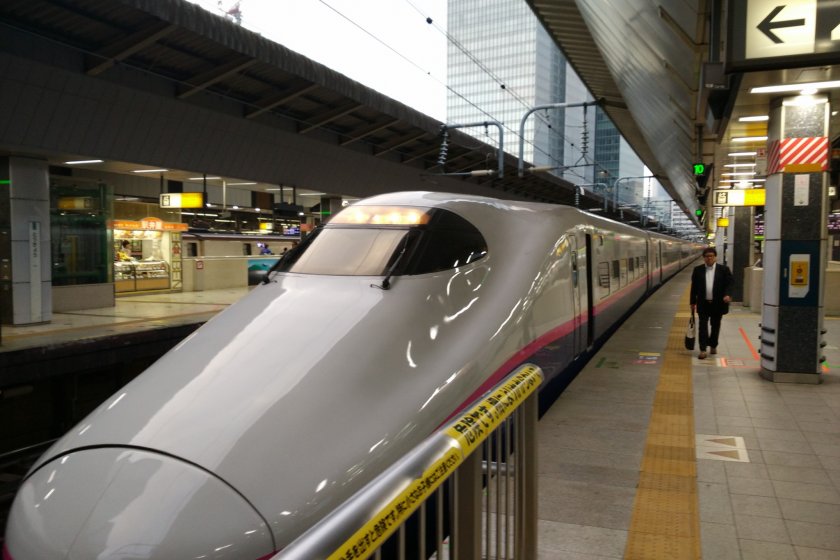
Itinerary Ideas with the JR East Pass
Cultural highlights of eastern Honshu

The JR East Pass covers the whole of eastern Honshu from Nagano prefecture to the northwest of Tokyo all the way up to Aomori prefecture in the Tohoku region. This rail pass allows holders to use all JR lines including express lines and shinkansen bullet trains for any five days within a two week period. This gives a lot of flexibility to travellers and with the very high speed and frequency of Shinkansen more places could be reached within one day.
There are too many places to be visited in east Japan. 5 weeks would not be enough to do all of them. I am going to suggest two journeys that cover the most important and renowned sites in east Japan, making the most out of the tickets.
Tour 1: via Nagano
- Day 1: Tokyo > Matsumoto (Duration: 3 hours) Matsumoto has a lot to offer, including the well preserved castle and Nakamachi street.
- Day 2: Matsumoto > Nagano (Duration: 1 hour) Nagano’s Zenkoji temple is the highlight of the city. Other than this, it's enjoyable to simply stroll the streets and taste the region's famed apple products and fresh-made soba.
- Day 3: Nagano > Nagaoka (Duration: 2 hours 30 mintues) > Sanjo (Duration: 0.5 hours) > Niigata (Duration: 1 hour) Nagaoka and Sanjo are small relaxing villages. Traditional crafts such as knife making from Sanjo or wine brewing in Nagaoka let you understand in depth local village lives.
- Day 4: Niigata > Sado Island Sado Island is 1 hour by jetfoil or 2.5 hours by ferry from Niigata. It has very beautiful landscape, perfect for hiking and cycling. The gold mine next to Aikawa is a cultural monument of Japanese mining history. On the east in Ogiminato and Shukunegi small traditional village is very relaxing. (To thoroughly visit Sado Island, two days is the minimum; but if time is not enough, a day from Niigata is also possible)
- Day 5: Niigata > Takasaki (Duration: 1 hours) > Utsunomiya (Duration: 1 hour) Tagasaki is a small city; yet there are nice shrines and Buddhist temple on its outskirt. Buses reach Shorinzan temple from the train station in 1 hour; another highlight, the Haruna Schrine and the nearby waterfall, takes around 1.5 hours to reach by bus. It offers very beautiful natural scenes.
- Day 6: Utsunomiya > Nikko (3/4 hours) > Tokyo (Duration: 2 hours) Enjoy Utsunomiya with its shrines, castle ruins and old church, then move on to Nikko, whose Buddhist temple are recognized as world heritage sites. Experience Kengo waterfall if time allows, before returning to Tokyo.
Tour 2: via Tohoku
- Day 1: Tokyo > Shin-Aomori (Duration: 3.5 hours) > Hirosaki (Duration: 30 minutes) Travel on the first day all the way north and moving downwards in the next days. Near Shin-Aomori station there is a very modern art gallery.
- Day 2: Hirosaki > Morioka (Duration: 2 hours) > Ichinoseki (Duration: 0.75 hours ) > Sendai (Duration: 30 minutes) There is a very nice castle in Morioka. Another famous point of interest in is the old headquarter of Iwate bank. In Ichinoseke you can trace the footsteps of Japanese great poet and writer Miyasawa Kenji. The city museum is fun to spend some time in. Travel to Sendai to spend the night there.
- Day 3: Sendai > Matsushima (Duration: 0.5 hours) / Sendai > Yamagata (Duration: 1.5 hours) Matsushima is one of the three most beautiful natural scenes in Japan. You can take a boat to see the eccentrically formed island. Or you can spend the day in Yamagata, another small town. The famous Risshaku-ji temple is just a few train stops away from Yamagata city. Go back in the evening to Sendai to spend the night.
- Day 4: Sendai > Utsunomiya (Duration: 1.5 hours) > Nikko (Duration: 1 hour) Utsunomiya in Gunma prefecture has number of attractions to offer. The remains of the ancient castle and an old Christian church are interesting to look at. Nikko could be done in the afternoon, the many majestic temples and the lake area on the west takes a least a few hours to visit
- Day 5: Nikko > Narita (Duration: 2.5 hous) > Sakura (Duration: 15 minutes) > Chiba (Duration: 20 minutes) > Tokyo / Narita airport The old Edo-style old towns of Narita and Sakura and various Buddhist temples in Narita are often missed out by those who only head to or come from the airport. In Chiba boats trips allow you to enjoy great views of the port.
Tips on riding JR trains
With the JR East Pass you don’t need to go through the gate; just show your pass to the conductor to get into and out of the stations.
Do plan ahead. Sometimes you won’t realize how fast or slow it would be to travel to the next destination, especially when Shinkansen is not used.
It makes sense to reserve a seat when riding a long journey. Just show your pass at the ticket offices and ask for a reserved seat.
Electric plugs are often available beneath windows on shinkansen, it is therefore better to reserve window seats if you need to charge any devices.
On the train, ask out of politeness the passenger behind you before you lower your seats.
Refreshments are served on trains, in case you are hungry or thirsty.
- One-day Trip Itineraries
- Share on Facebook
- Share on Twitter
- Copy link to share
By Kenny King Hin Choi
Community writer

Top Articles
- Recommended

Haneda Airport Ranked World's Cleanest

Sapporo Beer Opens New Brewery in Tokyo’s Ebisu

Tokyo One of the World's Most Walkable Cities

Anime Museums in Tokyo

Guide to Golden Week

2024 Grand Sumo Tournaments

Valley of Witches: a New Ghibli Park Attraction

Tokyo Takes 2nd Place on Top Coffee Cities List

Mount Omuro

Kurobe Unazuki Canyon Route to Link with Tateyama Kurobe Alpine Route

Guide to Bringing Medicines Into Japan

Your Name: Real-Life Locations in Tokyo

Hachiko Statue in Shibuya

Japanese Urban Legends

Iwatayama Monkey Park

Shibuya Crossing

Daikoku Car Meet

Guide to Suica Cards

Sanja Matsuri
More from this category.

Black Eggs of Owakudani, Hakone..
By Abby Rodriguez

Nabana no Sato Illumination
By Chris Glenn

Total Solar Eclipse in Japan
By Veronica Carnevale

Extraordinary Experiences in the..
Join the discussion.

Let us know how we can help.
Help us improve JapanTravel.com
We welcome any suggestions regarding this content. Your feedback is confidential and will be used to help improve this page.
Suggest an edit
https://en.japantravel.com/guide/itinerary-ideas-with-the-jr-east-pass/24312
Thank you for your support!
Your feedback has been sent.
JAPAN RAIL PASS
Let’s travel around Japan by train!
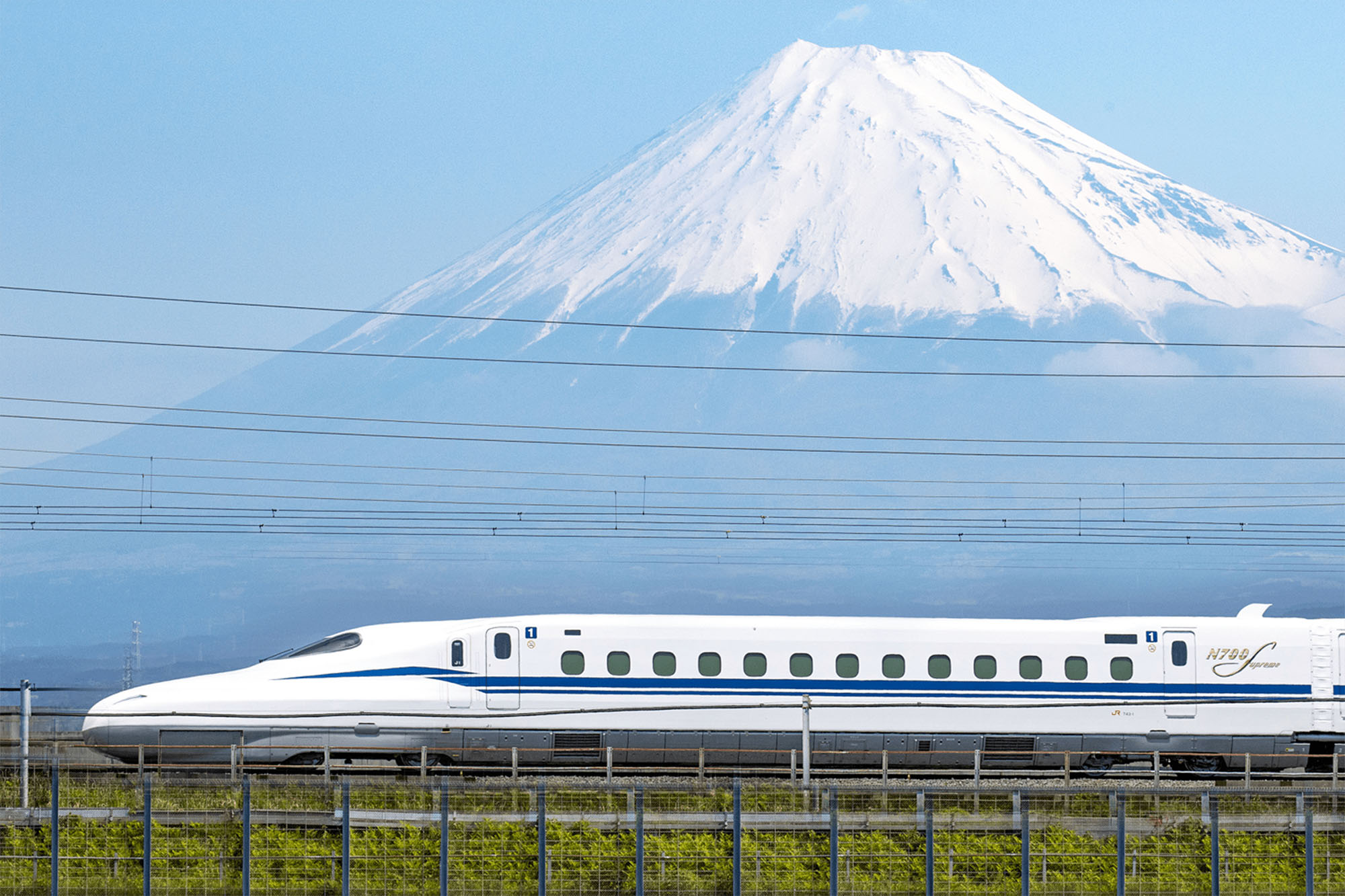
JAPAN RAIL PASS is a ticket offered jointly by the six JR Group companies, and it is convenient and reasonably priced for traveling throughout Japan by train.
You can ride JR trains all over Japan as many times as you want! With a JAPAN RAIL PASS, enjoy your own railroad trip!
Reserved seats can be booked in advance only when purchased on the official website.
\Purchase a ticket online now/
※Go to JAPAN RAIL PASS Reservation

The length of JR train lines in Japan amount to a total of over 19,000 km! You can travel to beautiful tourist sites all over Japan, from Hokkaido to Kyushu. Trains in Japan are safe and punctual, making it easy to maintain your original travel plans.
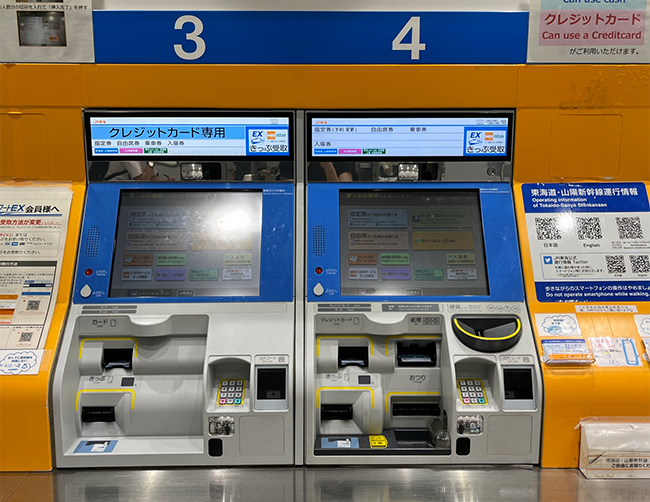
With JAPAN RAIL PASS, you can ride Shinkansen bullet trains and limited express trains! You can also book reserved seats on your own, so there is no need to stand in line at a crowded ticket office. This makes it easy to create a travel plan.
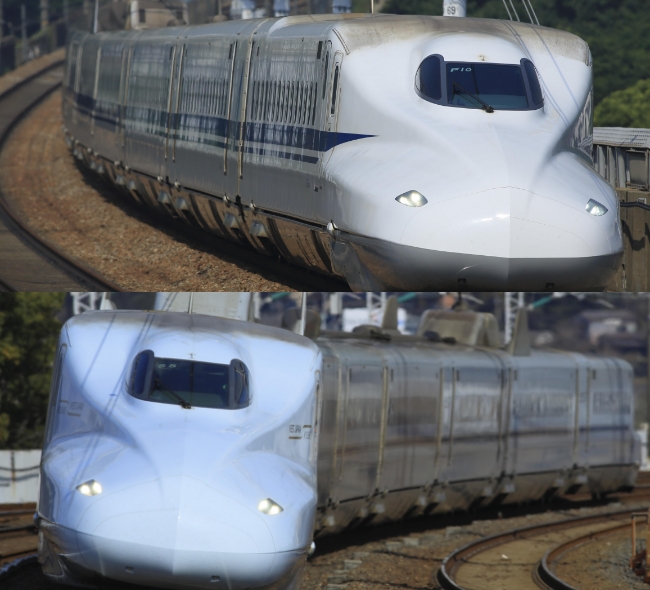
Purchasers of a JAPAN RAIL PASS can also purchase a special ticket to use the fastest "NOZOMI" and "MIZUHO" trains on the Tokaido and Sanyo Shinkansen Lines! A maximum of 12 NOZOMI trains run between Tokyo and Shin-Osaka per hour, making your travel even more flexible!
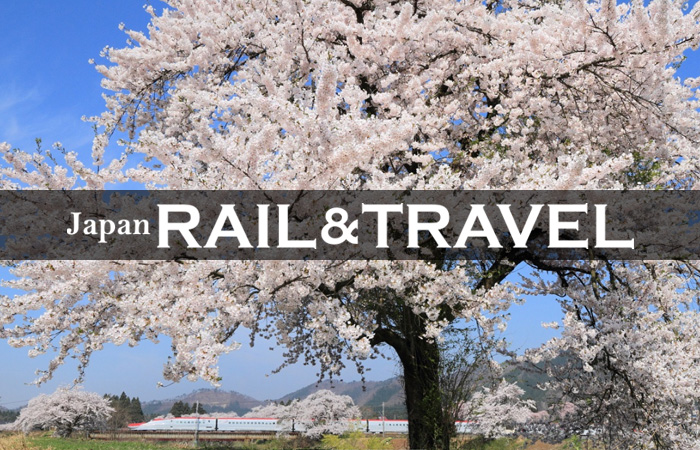
Purchase now!

COMMENTS
In case you missed it, JR Pass prices have increased by more than 30% since 1 Oct 2023.For example, the 7-day Whole Japan JR Pass which used to cost ¥29,650, now cost ¥50,000 (~S$450)! Quite a hefty increase! And to be honest, maximising the Whole Japan JR pass in the past always made the itineraries feel a little rushed. So we took this opportunity to find ways to explore more in different ...
Read also: JR Pass Guide — 9 Things You Need To Know Before Getting Your First Japan Rail Pass. Changes to the Japan Rail Pass. For the unfamiliar, the Japan Rail Pass comes in the form of 7, 14, and 21-day passes — covering the whole of Japan from the Hokkaido (northern) to Kyushu (southern) region. From October 2023, these are the changes ...
Japan Budget Guide - 10D Tokyo to Osaka for under S$1.1k using the JR Pass | The Travel Intern. 02:51. Japan Travel Guide: Osaka 大阪 - Kyoto 京都 - Nara 奈良 | The Travel Intern. 03:39. Road Trippin' Okinawa in 7 Days for Under SGD1.2K — Okinawa, Japan | The Travel Intern. 04:50.
The Japan Rail Pass (also known as the JR Pass) is the #1 most popular travel option for foreign visitors to Japan. It's a joint offering from the six companies comprising the Japan Railways Group (JR Group). It is the most economical means of travelling throughout Japan by rail, and includes most of the famous shinkansen - or bullet trains.
Fortunately, with the Japan Rail Pass (JR Pass), you can easily access a number of the country's trains, buses, and ferries in a convenient and affordable manner. Thanks to its flat-rate cost and widespread transportation coverage, the JR Pass is the most cost-effective option for long-distance travel within Japan, especially if you plan to ...
2. If you have a busy itinerary. One of the most noteworthy features of the Japan Rail Pass is its wide-ranging coverage. Indeed, all 46 prefectures of Japan's mainland can be traveled to via the Japan Railway system with this pass, making it especially perfect for people who have made a point to visit as many places as they can. The passes being for 7 days, 14 days, and 21 days, those going ...
Practical tips on JR PASS. The best mode of transportation in Japan is the train. It is fast and efficient and very easy to use. Japan is the country of trains, with probably the densest network in the world, the highest traffic... It has therefore developed a culture of train travel unique in the world.
An all-in the guide about the Must-Sees in Japan's northernmost prefecture, Hokkaido. We will be covering the highlights in each city, this is what we believ...
The Japan Rail Pass (also commonly called JR Pass) is a nationwide rail pass for long-distance train travel in Japan. The pass can be used only by foreign tourists and offers unlimited rides on JR trains for one, two or three weeks. It comes in two types: ordinary and green car. The latter is valid on green cars (first class cars), which offer ...
From October 1st, 2023, a regular seven-day adult pass costs 50,000 yen, while those looking for a little more luxury can buy a Green Car (first class) pass from 70,000 yen. The 14-day regular adult pass is 80,000 yen, while the regular 21-day pass costs 100,000 yen. Kids' passes are reduced by 50 percent for children aged between 6 and 11.
Ultimate 6D5N Hokkaido JR Pass Guide — Sapporo, Otaru, Asahikawa ... 6 comments · 63K views. The Travel Intern posted a video to playlist Japan. ... powdery snow and postcard-worthy views — https://bit.ly/3BjqFAh check out the full itinerary (incl. the best travel deals with Citi Singapore) Edited by: Brendan ...
Tip 1: Make the process smoother with a Japan Rail Pass. Those preparing for their first venture out to Japan will likely have come across the Japan Rail Pass in their pre-travel research. In essence, the Japan Rail Pass is a specialized commuter ticket that allows unlimited travel via Japan Railway (JR) public transport & train lines all ...
A Regional JR Pass can be useful if you would like to visit a particular region of Japan. Here's a quick overview! The Japan Rail Pass allows tourists unlimited travel on the entire Japan Railway network! But there are also regional variations, less expensive, and very useful and advantageous for travelers wishing to explore specific regions of ...
The Travel Intern added a new photo to the album: Infographics. · September 17, 2023 ·. Reminder: JR Pass prices will be increasing by more than 60% from Oct 2023. If it's your first time purchasing it, here's what you'll need to know: https://bit.ly/3KLWRRR. 91.
To get there take JR Tokaido line for Kozu from Tokyo Station, using your JR Pass. Once at Kozu (Kanagawa), take the JR Gotemba Line for Numazu, also included in the JR Pass, and get off at Gotemba Station. Once at Gotemba station, take a bus to Subashiri 5th station (not included in the pass), the gateway to climbing Mount Fuji.
Skip the usual Tokyo, Osaka and Kyoto. This Japan itinerary is for the seasoned Japan traveller: https://bit.ly/2DyM6lTGet your JR Pass:https://bit.ly/2fD1bH...
The Japan Rail Pass can be ordered starting 6 months or 180 days before your travel date. Orders with a longer lead time than 3 months will be dispatched about 2 months before your flight, so the JR Pass arrives well on time.
Day 1: Tokyo > Shin-Aomori (Duration: 3.5 hours) > Hirosaki (Duration: 30 minutes) Travel on the first day all the way north and moving downwards in the next days. Near Shin-Aomori station there is a very modern art gallery. Day 2: Hirosaki > Morioka (Duration: 2 hours) > Ichinoseki (Duration: 0.75 hours ) > Sendai (Duration: 30 minutes) There ...
You can travel to beautiful tourist sites all over Japan, from Hokkaido to Kyushu. Trains in Japan are safe and punctual, making it easy to maintain your original travel plans. ... Purchasers of a JAPAN RAIL PASS can also purchase a special ticket to use the fastest "NOZOMI" and "MIZUHO" trains on the Tokaido and Sanyo Shinkansen Lines! A ...